
- Songwriter Interviews
- Song Writing
- Fact or Fiction
- They're Playing My Song
- Songfacts Pages
- Songwriting Legends
- Songfacts Podcast
- Amanda Flinner
- Bruce Pollock
- Corey O'Flanagan
- Dan MacIntosh
- Laura Antonelli
- Leslie Michele Derrough
- Maggie Grimason
- Nicole Roberge
- Roger Catlin
- Shawna Ortega
- Stephanie Myers
- Trevor Morelli

Journey Song list
- After All These Years (2008)
- Any Way You Want It (1980)
- Anytime (1978)
- Be Good To Yourself (1986)
- City of Hope (2011)
- Dixie Highway (1981)
- Don't Stop Believin' (1981)
- Faithfully (1983)
- Feeling That Way (1978)
- Homemade Love (1980)
- I'll Be Alright Without You (1986)
- Lights (1978)
- Lovin', Touchin', Squeezin' (1979)
- Never Walk Away (2008)
- Only The Young (1985)
- Open Arms (1981)
- Send Her My Love (1983)
- Separate Ways (Worlds Apart) (1983)
- Still They Ride (1981)
- Suzanne (1986)
- Sweet and Simple (1979)
- The Journey (Revelation) (2008)
- Too Late (1979)
- Wheel In The Sky (1978)
- When I think Of You (1996)
- Where Were You (1980)
- Who's Crying Now (1981)
More Songfacts:
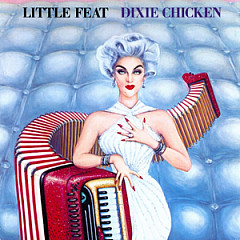
Dixie Chicken Little Feat
The Dixie Chicks got their name from the Little Feat song "Dixie Chicken." In 2020 they became "The Chicks" because Dixie refers to the American South in times of slavery.
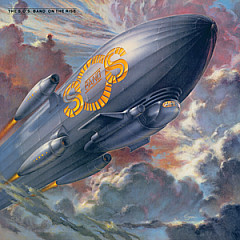
Just Be Good To Me The S.O.S. Band
"Just Be Good To Me" by The S.O.S. Band was the first hit written and produced by Jimmy Jam and Terry Lewis, who worked on Janet Jackson's Control album a few years later. They were members of The Time, a group created by Prince.
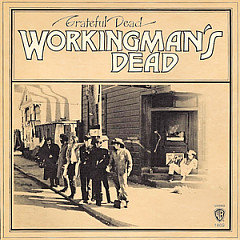
Uncle John's Band Grateful Dead
"Uncle John's Band" by the Grateful Dead was the first time the phrase "God Damn" appeared in a commercially-released song.
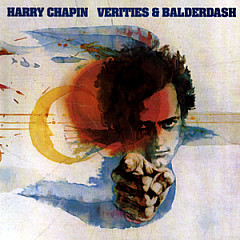
Cat's In The Cradle Harry Chapin
Harry Chapin's wife Sandy wrote the lyrics to "Cat's In The Cradle," which were actually about her first husband.
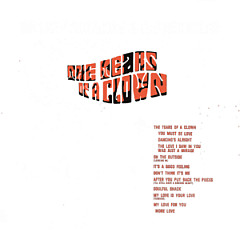
The Tears of a Clown Smokey Robinson & the Miracles
The most famous pop song featuring a bassoon: "The Tears of a Clown" by Smokey Robinson & the Miracles.
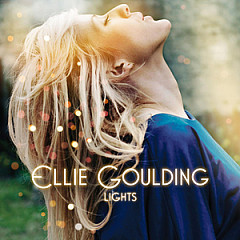
Lights Ellie Goulding
Ellie Goulding's hit song "Lights" is about her fear of the dark, which forces the singer to sleep with the lights on.
Editor's Picks
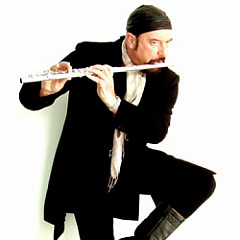
Jethro Tull Fact or Fiction
Stage urinals, flute devices, and the real Aqualung in this Fact or Fiction.
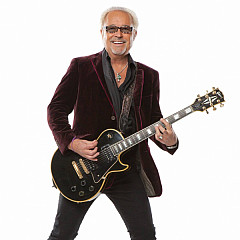
Mick Jones of Foreigner Songwriter Interviews
Foreigner's songwriter/guitarist tells the stories behind the songs "Juke Box Hero," "I Want To Know What Love Is," and many more.
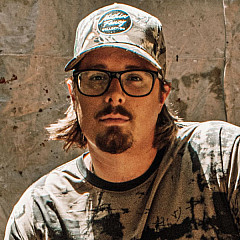
Hardy Songwriter Interviews
The country hitmaker talks about his debut album, A Rock, and how a nursery rhyme inspired his hit single "One Beer."
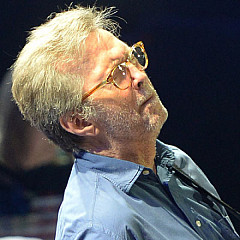
Eric Clapton Fact or Fiction
Did Eric Clapton really write "Cocaine" while on cocaine? This question and more in the Clapton edition of Fact or Fiction.
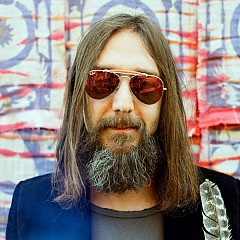
Chris Robinson of The Black Crowes Songwriter Interviews
"Great songwriters don't necessarily have hit songs," says Chris. He's written a bunch, but his fans are more interested in the intricate jams.
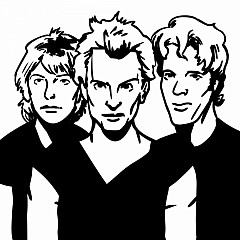
The Police Fact or Fiction
Do their first three albums have French titles? Is "De Do Do Do, De Da Da Da" really meaningless? See if you can tell in this Fact or Fiction.
Songfacts® Newsletter
A monthly update on our latest interviews, stories and added songs
Information
- Terms of Service
- Our Privacy Policy
- Google Privacy Policy
- Songfacts API
- Music History Calendar
- Song Licensing
- Affiliate Disclosure
- Privacy Manager
- X (Twitter)
Contribution
- Message Boards
- Songfacts Writers
©2024 Songfacts, LLC
The 10 best Journey songs
Let's face it, AOR just wouldn't have been the same without them – here are Journey's ten best tracks
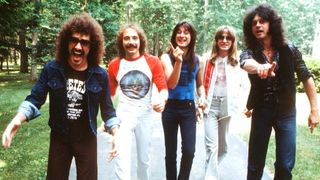
For many, Journey are the band who define AOR better than anyone else. Their catalogue glitters with unforgettable anthems, which not only contain massive choruses, but also the sort of musicianship you might expect from a band who began life as jazz rock instrumentalists before embracing the melodic rock style for which they’re renowned. We've gone through the band's back catalogue and hand-picked their 10 finest moments.
10. Girl Can’t Help It (1986)
After taking a break from the band to work on his solo album Street Talk , vocalist Steve Perry was persuaded to return to the fold for 1986's Raised On Radio album. While the production shows a clear-cut influence of the times, Perry’s vocals shine as brightly as ever, while Jonathan Cain’s smooth keyboards complement Neal Schon ’s edgy guitar stride.
9. Faithfully (1983)
This is the way Journey explained the problems of trying to carry on a relationship while out on the road touring. One of the stand-out tracks from 1983's Frontiers , Faithfully has a soft lilt that exposes an emptiness. However, this is augmented by the lush rhythm and the way that Steve Perry croons his way through without ever wallowing in over emotional hyperbole. A power ballad in the best Journey tradition.
8. Lovin, Touchin’, Squeezin’ (1979)
Anyone who thinks that Journey aren’t capable of anything other than slushy ballads really should check out Lovin, Touchin’, Squeezin’ from 1979's Evolution album. It has a funk groove, and while the tempo is very much of the balladic kind, Neal Schon stabs through with some electrifying moments. What’s more, Steve Perry’s vocals soar impressively to ensure maximum dramatic impact. One of the highlights on Evolution .
7. Lights (1978)
The opening song from 1978's Infinity record – the album that introduced Steve Perry to the world, and also put the band’s new-found melodic style on display for the very first time. It’s easy to tell why American radio fell in love with Journey at this point in time. The music is filled with commercial astuteness, the harmonies are sublime and the whole timbre of Lights is evocative and stylish. This oozes the sort of class that would become the norm for Journey in the coming years.
6. Who’s Cryin’ Now (1981)
Who’s Cryin’ Now begins with an unvarnished piano piece from Jonathan Cain, on which Steve Perry builds his rich tone. And Ross Vallory provides some tasteful bass lines, to underline the whole feel of the song. This is the type of track that accentuates Perry’s love for great soul singers, while it also showcases the way in which Journey stood apart from all the huge selling AOR masters, and why Escape is regarded as the classic Journey album.
- Inside AOR, the most under-appreciated sub-genre of all time
- The 40 Best AOR Vocalists Of All-Time: 10-1
- The Top 10 Essential 80s AOR Albums
5. Stone In Love (1981)
The fact this song opens up with shards of Neal Schon's guitar riffing proves that Journey were always prepared to give full weight to the heavier side of their talent. And Steve Perry also comes across with a lot more power than you might expect. This is a song where Journey never forget about the melody, but also give free rein to a rocky vibe. It also accentuates that Escape was always far more than just a collection of power ballads.
Classic Rock Newsletter
Sign up below to get the latest from Classic Rock, plus exclusive special offers, direct to your inbox!
4. Any Way You Want It (1980)
It may seem odd, but this song was actually inspired by Thin Lizzy , with whom Journey had toured a couple of years before recording the Departure album in 1980. But when you dig down and analyse the way in which the vocals are constructed, and the interchange between the instruments, then the influence becomes a lot clearer. There’s a gliding feel to the guitar parts that does feel like it is Thin Lizzy influenced, and Steve Perry adopts a storytelling style that is close to the Phil Lynott approach – and the whole feel suits Journey superbly.
3. Wheel In The Sky (1978)
Wheel In The Sky was co-written by Robert Fleischman, the band’s original choice of vocalist when they moved into a more commercial direction. However, when Fleischman didn’t work out and was replaced by Steve Perry, the song was thankfully retained. It starts with a flashing guitar groove, through which Perry cuts with a vibrant performance. In some ways, this is a basic live performance from the band, bringing a heavier dynamic to bear, but this fitted right into the whole feel of Infinity , and showed Journey could pound with the best.
2. Separate Ways (Worlds Apart) (1983)
After the enormous success of the Escape album, how did the band choose to open up their next album Frontiers ? With a powerhouse rocker than fitted right into an era where AOR was beginning to become a little less reliant on studio technology and celebrated talent. Of course, the rich production is evident here, but what makes the song work superbly is that way Jonathan Cain, Steve Perry and Neal Schon intertwine. There’s a buoyancy in Separate Ways (Worlds Apart) that tells of a band who are really playing off of each other’s strengths. The result is undeniably passionate.
1. Don’t Stop Believin’ (1981)
Is there anyone on the planet who does not know this song? It has got to be one of the most exposed tracks over the past two decades or so. And, because it’s so well known, it’s very easy to lose sight of just why this is so popular. Because Don’t Stop Believin’ is a peerless example of musical genius. Everything about it is simply perfect – the musicality, the vocals, the simple structure, the insistent melody… hell, this is not just Journey’s best song, it’s one of the truly landmark moments of the 80s.

Malcolm Dome had an illustrious and celebrated career which stretched back to working for Record Mirror magazine in the late 70s and Metal Fury in the early 80s before joining Kerrang! at its launch in 1981. His first book, Encyclopedia Metallica , published in 1981, may have been the inspiration for the name of a certain band formed that same year. Dome is also credited with inventing the term "thrash metal" while writing about the Anthrax song Metal Thrashing Mad in 1984. With the launch of Classic Rock magazine in 1998 he became involved with that title, sister magazine Metal Hammer, and was a contributor to Prog magazine since its inception in 2009. He died in 2021 .
"That was a special adventure – I wouldn’t be here without him": Robert Trujillo says he'd love to work with Ozzy Osbourne again and reveals the classic cult supergroup he wants to resurrect
David Byrne and Devo, Courtney Barnett, The War On Drugs and more to appear on Noise For Now Vol. 2, a comp to benefit abortion access and reproductive rights
"We grew up loving classic-era prog rock and that’s the music we decided we wanted to create, and also to make a real impact with it." The story of Haken's debut album Aquarius
Most Popular
By Malcolm Dome 25 March 2024
By Matt Mills 25 March 2024
By Rich Hobson 25 March 2024
By Jordan Blum 25 March 2024
By Dave Ling 25 March 2024
By Dave Everley 25 March 2024
By Fraser Lewry 25 March 2024
By Dave Everley 24 March 2024
By Niall Doherty 24 March 2024
By Matt Mills 24 March 2024
By Julian Marszalek 24 March 2024
- McCartney's Fave Beatles Song
- Springsteen Albums Ranked
- The Women of Mick Jagger
- Triumph Won't Make Rock Hall
- Frehley : Too Nervous to Stand
- Skid Row Parts Ways With Singer

Ranking All 52 Journey Songs From the ’80s
Journey moved more than 6 million albums in America in the '70s, most of them after Steve Perry joined in time for 1978's Infinity . Not bad.
Then their second proper studio album of the following decade, 1983's Frontiers , sold more than that all but itself. By then, however, they'd amassed so much commercial momentum that this LP was actually considered something of a letdown.
Journey kicked off the '80s with a trio of very different farewell projects as co-founder Gregg Rolie left the band. The Top 10 hit Departure arrived first as a proper studio album, selling three million copies. Journey followed that with Dream, After Dream (a little-heard largely free-form import movie soundtrack) and Captured , a double-platinum Top 10 live sendoff with two new songs.
Then Jonathan Cain supercharged the band's more recent pop-leanings, bringing along a new sensibility (and a song idea for their highest-charting single). Perry was still their honeyed frontman and Neal Schon was still their soaring guitarist – but something fundamental had changed.
READ MORE: Top 10 Post-Steve Perry Journey Songs
The chart-topping Escape proceeded to reel off three Top 10 hits, while moving a career-best 10 million copies in the United States alone. Prior to that, they'd never had a song go higher than the No. 16 finish for 1979's "Lovin', Touchin', Squeezin.'"
Journey couldn't quite reach those heights again, concluding the decade with 1986's double-platinum Raised on Radio . But they still spun off four more Top 20 hits.
Along the way, they issued a little more than 50 proper songs in the '80s, including B-sides, bonus tracks and stand-alone releases. Here's how they ranked, with comments and insight from my new Amazon best-selling rock and pop band bio, Journey: Worlds Apart : No. 52. "Back Talk" From: Frontiers (1983)
This song almost single-handedly kept Frontiers from becoming Journey's best '80s album . That's enough to earn this spot. No. 51. "Departure" From: Departure (1980)
Pretty but insubstantial, this brief instrumental was tucked into the middle of co-founding member Gregg Rolie's last proper studio effort with Journey. No. 50. "I'm Cryin'" From: Departure (1980)
Steve Perry usually had a canny ability to convey emotion. "I'm Cryin'," however, slipped off into abject mawkishness. No. 49. "Positive Touch" From: Raised on Radio (1986)
The demos for this album were completed with a click track rather than in a room together as Journey had typically done in the past. That left drummer Steve Smith to either copy these metronomic sounds – heard to teeth-grating effect on "Positive Touch" – or to stay home. Partway through the sessions, it became the latter. No. 48. "Liberty" From: Time3 (1992)
A Frontiers -era leftover for those who wondering what Journey would sound like as a country band. No. 47. "Troubled Child" From: Frontiers (1983)
Another Side Two dud. Replace this with "Only the Young" or "Only Solutions," and all is forgiven.
No. 46. "Happy to Give" From: Raised on Radio (1986)
Perry had trouble nailing the vocal on this too-atmospheric ballad, which should have told them something. (In fact, it got to the point where Cain started calling "Happy to Give" Perry's "pet song.") It's understandable: "Happy to Give" grew out of a soundtrack idea Cain had, and it sounds like it. Journey never played the song live. No. 45. "La Raza Del Sol" From: B-side of "Still They Ride" (1981)
The song's heart is in the right place, as Cain finds inspiration in the plight of immigrant California farm workers. Unfortunately, that narrative is surrounded by a meandering music bed that sounds like a rightly discarded leftover from their pre-Perry days. No. 44. "Mother, Father" From: Escape (1981)
An overwrought, understandably disjointed song that was pieced together from two separate ideas by Perry and Schon, then completed with another interlude written by Schon's dad. No. 43. "All That Really Matters" From: Time3 (1992)
Jonathan Cain took over the mic for this Frontiers outtake, returning to a sound that's more in keeping with his earlier tenure in the Babys . That's fine, but it's not Journey. No. 42. "Homemade Love" From: Departure (1980)
Despite discovering a newfound chart prowess, Journey was still prone to longing looks back to their earliest musical excesses. In keeping, this sludgy, clumsily salacious song couldn't have sounded more out of place on Departure . Positioning "Homemade Love" as the album-closing song made even less sense. No. 41. "Dixie Highway" From: Captured (1981)
"Dixie Highway" sounds like what it was: a throwaway track written on Journey's tour bus while traveling the eponymous interstate into Detroit. It was perhaps interesting enough to be tried out live, but not interesting enough to make it onto a studio album.
No. 40. "Keep On Runnin'" From: Escape (1981)
A pedestrian rocker, "Keep on Runnin'" is the only stumble on Side One of Journey's biggest-ever selling album. No. 39. "Dead or Alive" From: Escape (1981)
The second of two throwback-style songs on Escape that seek to approximate Journey's more rugged, fusion-leaning '70s-era, and the lesser of the pair. That "Dead or Alive" came directly after the too-similar "Lay It Down" didn't do the song any favors, either. No. 38. "Escape" From: Escape (1981)
Cain and Perry are credited as co-composers, but the title track from Escape still feels like the first of what became a series of not-always-successful attempts by Neal Schon to balance Journey's new knack for balladry with ballsier rock songs. That's certainly the role it played in contemporary setlists after he became the band's sole remaining original member. No. 37. "Line of Fire" From: Departure (1980)
A perfunctory rocker best remembered for a sound effect at roughly the 2:10 mark that Perry cribbed from Junior Walker's chart-topping 1965 R&B hit "Shotgun ." No. 36. "Precious Time" From: Departure (1980)
Rolie adds a gurgling harp squall, but not much else stands out.
No. 35. "Lay It Down" From: Escape (1981)
Steve Smith approximates early drummer Aynsley Dunbar's thudding, heavy-rock approach while Schon swirls into the stratosphere on one of two songs from Escape that could have seamlessly fit into a Rolie-era album. No. 34. "Chain Reaction" From: Frontiers (1983)
Schon finds a fusible groove, then joins Perry for a gutty vocal interplay. But "Chain Reaction" ends up getting lost somewhere along the way. No. 33. "Once You Love Somebody" From: Raised on Radio (1986)
They tried for a bluesy feel on a song echoing the relationship troubles that both Perry and Cain were then experiencing, but there's simply not enough grit to this. No. 32. "Natural Thing" From: B-side of "Don't Stop Believin'" (1981)
Your average classic rock radio-loving fan might not peg Steve Perry as a died-in-the-wool R&B guy who can totally pull off this sometimes very un-Journey style. Tell them to start here. No. 31. "Rubicon" From: Frontiers (1983)
This song drove a seemingly permanent wedge in the band. Schon said he was playing "Rubicon" when Perry walked over and turned down his amp . He argued that fans wanted to hear his voice rather than all of those guitars. They put out only two more albums together, and it took them 13 years to do it.
No. 30. "Frontiers" From: Frontiers (1983)
The second-best song on this album's deflating flip side. Singing in a clipped, coolly detached tone, Perry offers a great put-down for heartless generals and politicians: " War is for fools; crisis is cool ." No. 29. "It Could Have Been You" From: Raised on Radio (1986)
Schon's riffy contributions work in brilliant counterpoint to Perry's poignancy, underscoring why this partnership meshed so easily – and so well. No. 28. "Where Were You" From: Departure (1980)
There's a reason Journey opened their concerts with "Where Were You" for so long. It simply crackles with energy. They were just coming off an opening gig with AC/DC at this point, and the headliner's knack for outsized, riffy rockers obviously rubbed off. No. 27. "Little Girl" From: B-side of "Open Arms" (1981)
"Little Girl" was the the only proper song from 1980's Dream, After Dream , a soundtrack that's not part of the band's main catalog since it's otherwise filled with incidental music for a now-forgotten foreign film. Elsewhere, the instrumentals provide an untimely restatement of their old penchant for prog and fusion, considering Journey was already on a pop-chart roll. Dream After Dream disappeared without a trace once Journey issued Escape , and the too-often-overlooked "Little Girl" only saw U.S. release as the B-side to their "Open Arms" single. No. 26. "Raised on Radio" From: Raised on Radio (1986)
Radio holds a talismanic place in Perry's imagination for two reasons. His absent father owned a station. At the same time, it's a constant presence in the youthful places where he returns, time and time again, for creative sustenance. If things had gone another way, Perry has said he could see himself as a DJ, rather than a huge pop star. No. 25. "Ask the Lonely" From: Two of a Kind (1983)
Jonathan Cain once said Perry could write love songs in his sleep , and this only-okay leftover is an example of that assembly line-type approach. Yet, he gives his whole heart to every line. "This is my big theory on Steve Perry: Beyond being a great vocalist, I think the secret and maybe why generations connect with him is he is an empath," former Rolling Stone editor David Wild told me. By the end, "Ask the Lonely" still proves to be a better choice that most of what appeared on the back end of Frontiers .
No. 24. "Why Can't This Night Go on Forever" From: Raised on Radio (1986)
Written in tribute to their fans, "Why Can't This Night Go on Forever" moved past its quite overt "Open Arms" / "Faithfully"-style ambitions on the strength of performances by Schon and Perry.
No. 23. "The Eyes of a Woman" From: Raised on Radio (1986)
Steve Smith only appeared on three Raised on Radio tracks, but that doesn't mean he didn't have an undeniable impact. His anticipatory rhythm builds this quiet tension on the underrated "The Eyes of a Woman," as Schon's echoing chords surround the vocal. Perry has called this one of his favorite Journey songs, and that might be because "The Eyes of a Woman" is one of the very few here that fully recalls their Escape / Frontiers -era midtempo sound.
No. 22. "Suzanne" From: Raised on Radio (1986)
If Steve Perry sounds a little overwhelmed on the second single from this album, there's a reason for that. This No. 17 hit was written in tribute to an actual crush – framed as a fantasy encounter with a film star who also had a singing career. He never revealed her name.
No. 21. "Edge of the Blade" From: Frontiers (1983)
Side Two of Frontiers gets off to a roaring start. Buckle up, though. As things progress, you're in for a bumpy ride.
No. 20. "Be Good to Yourself" From: Raised on Radio (1986)
A throwback Top 10 rocker, "Be Good to Yourself" had little in common with the sleeker, more adult-contemporary feel found elsewhere on Raised on Radio . It didn't make for the most representative lead single, but manager Herbie Herbert insisted – because "Be Good to Yourself" sounded the most like Journey on their previous two albums.
No. 19. "I'll Be Alright Without You" From: 'Raised on Radio' (1986)
Schon, who earned a co-writing credit with Cain and Perry, told me he tried out a then-new guitar in search of a distinct sound for this song. Best known for using a 1963 Fender Stratocaster, Schon experimented with a graphite Roland 707 to see if he could get a different, more even tone. It worked: "I'll Be Alright Without You" remains Journey's penultimate Top 20 hit, followed by 1996's "When You Love a Woman." Cain, like Perry, was going through a breakup and called this track the other half of the emotions expressed in "Once You Love Somebody."
No. 18. "Only Solutions" From: Tron (1982)
Unjustly forgotten, and barely used in the film at all, the hooky "Only Solutions" would have greatly enlivened what turned out to be a letdown on Side Two of Frontiers .
No. 17. "People and Places" From: Departure (1980)
A circular vocal effect makes the song's larger point, as Perry and Schon share a vocal that examines life's maddening duality.
No. 16. "Faithfully" From: Frontiers (1983)
Journey was in the midst of a two-leg, 132-show tour in support of Escape and Jonathan Cain was feeling disconnected from his then-wife. Cain noticed the moon above their tour bus and, to him, "it looked like the midnight sun." He wrote that down then fell asleep. Upon awaking, Cain said the rest of "Faithfully" came to him in a rush. He wrote it in his own key, and that allowed Perry to explore a different vocal timbre. "'Faithfully' is to die for. I mean, Jonathan Cain's lyrics are amazing, and Steve Perry gave it everything he had," original MTV VJ Martha Quinn told me. "From the opening lines, he's just absolutely dripping with emotion. Every time you put the needle down, you can just feel it." Journey finished the song with a memorable back-and-forth between Perry and Schon, also completely unrehearsed.
No. 15. "Walks Like a Lady" From: Departure (1980)
A great example of the way Journey songs evolved in the studio. Perry brought in a rough sketch, Schon added a blues-inspired riff, then Smith picked up his brushes. All that was left to complete things was Rolie's greasy Hammond B3 groove, and he said it's one of his favorites.
No. 14. "Girl Can't Help It" From: Raised on Radio (1986)
Perry essentially took control of Journey in the run-up to this album, switching out band members for sidemen with whom he'd worked before then serving as the project's de facto producer. That led them to some song treatments that moved well away from anything Journey had done before, or since. "Girl Can't Help It," one of three Top 40 singles from Raised on Radio , was another exception. This was classic Journey, spit-shined up for a new era.
No. 13. "After the Fall" From: Frontiers (1983)
Perry began this song on the bass, perhaps an early indication of the changes in store for Journey. By the time they released 1986's Raised on Radio , Ross Valory had been replaced by Randy Jackson, later of American Idol fame. Smith departed too, but not before proving himself utterly invaluable here.
No. 12. "Good Morning Girl" / "Stay Awhile" From: Departure (1980)
Inextricably linked by their successive appearances on Departure , these two songs showcased Perry's dual gifts: "Good Morning Girl" was a fragile, impossibly beautiful ballad that emerged from a jam session with Schon, while "Stay Awhile" showed off his R&B chops.
No. 11. "Who's Crying Now" From: Escape (1981)
The initial single from Escape , a No. 4 hit, perfectly illustrates how Cain's new presence impacted Perry's writing style, then forever changed Journey. The first inklings of the track came to Perry as he was driving up to San Francisco on Route 99. But "Who's Crying Now" was a song with no real direction until Cain suggested the title. They worked out a cool b-section featuring only voice and keyboard, and their very first co-written composition was completed. "He helped me go to another place as a writer," Perry later gushed in Joel Selvin's Time3 liner notes. Inspired, Perry also fought to keep Schon's extended guitar solo on the single.
No. 10. "Someday Soon" From: Departure (1980)
The final major vocal collaboration featuring Perry and Rolie and, still, one of the more memorable for its thoughtful optimism. There were plenty of reasons for this upbeat outlook, even though "Someday Soon" appeared as Rolie exited. Departure reached the Billboard Top 10, then the band's highest-charting effort ever. Meanwhile, a subsequent, wildly successful tour was chronicled on 1981's Captured . But why weren't there more of these duets? "I didn't want to quit singing, but it got diminished, there's no doubt," Rolie told me. "I don't think Perry really liked me singing. 'I'm the singer.' Well, OK. But my answer to that is, you know, the Beatles did great with four singers. Four, right? Not one."
No. 9. "Open Arms" From: Escape (1981)
Jonathan Cain brought this to Journey after John Waite , the frontman in Cain's former band the Babys, rejected an early version. Schon didn't really want "Open Arms" either, but Perry intervened. He knew just what to do with it. "He was fascinating to write with because he's such a technician. I'd never worked with a vocal perfectionist," Cain told me. "I mean, he would memorize every line as we wrote it, then his voice — he'd put it in the register we wanted and deliver it how we wanted it. Steve rehearsed everything as we wrote it, so then when we got into the studio or rehearsal, he knew where it lived in his range. He was very specific about what words he wanted to say. I was kind of taken with it." That helped turn "Open Arms" a soaring paean to renewal. Oh, and Journey's highest-charting single ever.
No. 8. "Still They Ride" From: Escape (1981)
Cain and Schon earned co-songwriting credits on the lonesome "Still They Ride," and Steve Smith showed off an accomplished dexterity. But this song belonged in no small part to Perry. Its main character, Jesse, never left the town of his youth, and still drives through its darkening streets looking for some connection. Perry has admitted that this dreamer who refuses to give up on his youthful reverie works as a metaphor for himself. If you'd found yourself in mid-century Hanford, California, you might have seen Journey's future singer doing the same thing. Along the way, a touchingly emotional trip back to Perry's San Joaquin Valley youth showed that the seemingly ageless Escape could still produce a Top 20 single, more than a year after its release.
No. 7. "The Party's Over (Hopelessly in Love)" From: Captured (1981)
"After I left," Gregg Rolie told me, "it became more pop rock. It was a little heavier when I was in it." That transformation started with "The Party's Over," a Top 40 studio song tacked onto a live project which marked Rolie's exit. Journey's original keyboardist doesn't even appear on the track. Instead, the session featured Stevie "Keys" Roseman, who was later part of VTR with Ross Valory and George Tickner. He'd been working on a later-shelved project with Tickner, Valory and Schon in the next studio. He still hopes to have the old masters "baked so they can be released in some format," Roseman told me. "Neal played a couple of unbelievable solos that still need to be heard."
No. 6. "Stone in Love" From: Escape (1981)
Schon had a tape recorder going while he fooled around with the guitar during a party at his house in San Rafael. Perry and Cain did the rest. "Stone in Love" subsequently charted in the U.K., but never appeared on the main Cashbox or Billboard charts in America. After the release of "Open Arms" and "Still They Ride," however, it provided a welcome reminder that Journey had not given themselves completely over to balladry.
No. 5. "Separate Ways (Worlds Apart)" From: Frontiers (1983)
Cain and Perry looked on, feeling a little helpless, as Valory and Schon endured painful divorces. "There's got to be a more soulful way of looking at this," Perry countered in the Time3 liner notes. Just like that, the pair had the makings of the Top 10 opening single from Frontiers . "Separate Ways (Worlds Apart)" so energized Journey that they began performing it onstage before Perry had completely learned the words. Then they filmed a video that sharply divided some fans. "Rock aficionados may have said, 'Oh, that was cornball,'" Martha Quinn told me. "Well, ask people that are still doing send-ups today, down to every last camera angle. Those people love that video. That's something else you couldn't have predicted that would have stood the test of time — but it has. People love it."
No. 4. "Send Her My Love" From: Frontiers (1983)
One of four Top 40 hits found on the album, the lonesome No. 23 anthem "Send Her My Love" is notable for an ambient turn by Schon (he used a high-end Lexicon 480L echo unit) and perhaps the most intriguing drumming contribution on Journey's string of familiar ballads from Steve Smith. A jazz lover who later founded his own combo, Smith added a slyly involving polyrhythm lifted from Miles Davis' "In a Silent Way." "The drummer on that was Tony Williams," Smith told me, "and he played quarter notes with a cross-stick on the snare drum — a very hypnotic groove." Same here.
No. 3. "Only the Young" From: Vision Quest (1985)
Another song that, had it been included, might have pushed Frontiers past Escape as Journey's best Cain-era album. Instead, "Only the Young" appeared much later on this soundtrack, and by then Kenny Sykaluk – a 16-year-old fan suffering from cystic fibrosis – had already died after becoming the first person to hear it . The song is now credited with bringing Journey back together after a period of solo projects. "Only the Young" eventually opened every concert on Journey's subsequent tour, too. Still, it will be forever associated with Sykaluk's brave fight.
No. 2. "Any Way You Want It" From: Departure (1980)
Perry said the vocal and guitar interplay on "Any Way You Want It" was inspired by the performances of Phil Lynott , after Thin Lizzy opened for Journey. So, Perry sang "she loves to laugh," and Schon responded with a riff. Perry sang "she loves to sing," and Schon responded again. Then "she does everything" led into another guitar riff — just like Thin Lizzy might have. Perry and Rolie then brought a tight focus to the bursts of shared vocals that close things out, fashioning Journey's second-ever Top 40 hit – but not before Rodney Dangerfield's character in Caddyshack broke out in a hilariously awkward dance as "Any Way You Want It" blared out of a golf bag radio.
No. 1. "Don't Stop Believin'" From: Escape (1981)
It wasn't the biggest song of the year. In fact, "Don't Stop Believin'" finished at No. 72 on Billboard magazine’s year-ending Hot 100 singles of 1982. It wasn’t even the biggest song from Escape , which spun off not one but two songs that finished higher on the charts. It didn’t have a typical song structure, not referencing the title until 3:22 in, after three verses, two pre-choruses, and some abbreviated instrumental passages. It's set in a place — South Detroit — that doesn’t actually exist. So how did this become Journey's defining moment? "Who wants to keep believing? That would be everybody, you know?" Jonathan Cain told me. "And I think it's a certain song in uncertain times. You have this certainty about that song, and it has this rhythm to it that's just very assuring and very sure of itself. From the beginning piano line, it speaks — and it speaks to hope. I think people are looking for hope."
Nick DeRiso is author of the Amazon best-selling rock band bio 'Journey: Worlds Apart,' available now at all major booksellers' websites .
Rockers Whose Bands Tried to Erase Them
Gallery Credit: Nick DeRiso
You Think You Know Journey?
More From Ultimate Classic Rock


10 Best Journey Love Songs of All Time, Ranked
By: Author Justin Rowe
Posted on Last updated: April 19, 2022
Home » Music » Rock » 10 Best Journey Love Songs of All Time, Ranked
Share on facebook Share Share on twitter Tweet Share on pinterest Pin
Full of energy and music prowess, Journey is undeniably one of the best music groups in history, and their impact stretches all over the world. They never held back in any of their products, and every live performance brought euphoria to the ears of many.
Even if you aren’t a particular fan of their music, there’s a good chance you’ve heard it somewhere as they’ll forever exist in film, tv, events, and the playlists of their fans.
In this article, I’m going to focus on a particular niche from their discography and break down the ten best Journey love songs of all time!
1. Open Arms
Riddled with many spine-tingling melodies and a slow ballad-like tempo, “Open Arms” is one of the most recognizable records on this list. It’s more than a fan favorite; it’s a generational hit that continues to be appreciated by millions of people.
It offers lots of open space to give the instrumentation room to shine, and the vocals come with the range we’re used to hearing while driving, an emotion that can’t be ignored. The drums clash while the guitar hits reverberating chords and solo melodies that are top-notch.
2. Faithfully
An inspirational piano melody carries this record, offering a sentimental tone that’ll get you sunk into your feelings. In a similar fashion to a lot of their songs, “Faithfully” is a passionate record from Journey that’ll go down in music history.
The song appeared on their album Frontiers, which made waves in the music scene of the early 1980s. It’s another record that immediately comes to mind when the group pops up in conversation and is hailed as one of the best Journey love songs for many fans.
3. Separate Ways (Worlds Apart)
With one of the most adrenaline-fueled melodies on this list, Journey does an excellent job of telling a cinematic story through energetic production and signature vocals. “Separate Ways” has a rocking dynamic, yet the lyrical content is a bit touching.
Sometimes love doesn’t work out, and you have to split ways, even if you still care about them, and this record touches on the emotional hardships that come with this reality. Even with the lyric’s tone, it’s hard not to get into the upbeat energy of the song.
4. With Your Love
A slow jam that doesn’t shy away from the group’s usual big production style, this song is an excellent choice for a slow dance with your significant other. It offers many angelic piano melodies and spacey guitar melodies that trickle in the background.
“With Your Love” is one of the best Journey love songs out of their discography, and it comes with a classic quality that anyone can enjoy regardless of their music preference. I’d say this song falls under the title of good music that’s timeless in all of the best ways.
5. Any Way You Want It
“Any Way You Want It” boasts one of the catchiest and most memorable hooks out of Journey’s entire career, and its use in media continues to immortalize the record. Released in 1980, the song was included on their album Departure , which kicked off a lot of the band’s new sounds for the 80s era.
Offering a distorted guitar melody that gets stuck in your head, it keeps a pop-driven tempo that’s pretty danceable. In between the big layered vocals and consistent pop drums, your ears are blessed with multiple guitar solos that’ll keep you tuned in.
6. Send Her My Love
Many consider this record of being one of the best Journey love songs due to the emotionally gripping production value and touching lyrical content. It’s a great blend of slow jam qualities with the unique energy that can be found in all of Journey’s music.
The vocals don’t hold back on range, but they are delivered in a softer tone than many other songs on this list. A lot of Journey’s uptempo and energetic music gets most of the attention, but their slower jams, such as “Send Her My Love,” come with equal quality and pristine sound.
7. When You Love a Woman
Offering ethereal piano melodies and an introspective tone to the lyrics, the record is extremely relatable for many people that have fallen in love. With the dynamic tropes of a slow jam, it holds a downtempo that gets many people in their feelings.
The way the lead vocals are layered on the hook brings every element of the song into full focus, making it seem like the production is hitting an overwhelming part of the story. Once the vocals take a break, the song breaks into an orchestral and cinematic direction that takes the record to an entirely new level.
8. Don’t Stop Believin’
Likely the most popular and well-known song from Journey on this list, “Don’t Stop Believin’,” is a record that truly propelled the music group to a worldwide status. Although people love many of their songs, this record quickly rose to the number one spot for music lovers on a global scale.
Not only is it a production powerhouse that’s hard to match, but it’s a record that leaves an imprint on everyone who has heard it for the first time. Out of their entire discography, this is one timeless record that’ll forever be associated with the group’s influence on the music industry.
9. Wheel in the Sky
An undeniable bop from Journey, “Wheel in the Sky” provides a rocking tempo with perfectly layered vocals that’ll send chills throughout your whole body. It’s infectious in the sense that it makes you want to sing along, or at the least, you won’t be able to stop tapping your foot and nodding your head to the beat.
With plenty of suspense, waves of emotion, climatic hooks, and intense guitar solos, you get immersed from beginning to end. It’s also another record from their discography that boasts one of the most memorable choruses in music history.
10. Lovin’, Touchin’, Squeezin’
Another love jam from the group, this record offers sultry tones that give it a different flair and plenty of sweet notes you can share with a special someone. It also has a great swing to it which makes it a good choice for the dance floor.
Many of the groups’ more uptempo records get most of the recognition in conversion, but this song is easily in my top ten personally. Every one of their songs brings a unique production value, and this record is another that won’t be forgotten with passing generations.

Justin is an audio engineer with years of experience in the field. He has been creating and playing music his entire life, but he really found his passion for engineering when he was introduced to Logic Pro at age 10. Justin has spent countless hours perfecting his craft and now works as a freelance engineer out of Boston, MA.

60 Songs That Explain The 90s – A Nostalgic Journey Into the Past
The 90s were more than just a span of ten years — it was a living, breathing entity, alive with a symphony of sounds that still echo in my heart. I grew up in this era, where every beat, every lyric, and every melody was a vibrant splash on the canvas of my youth.
It wasn’t just music. It was an electric current that powered our lives, fueled our dreams, and gave voice to a generation finding its footing in a rapidly changing world.
Here are the 60 most iconic tracks from this time.
1. Smells Like Teen Spirit – Nirvana
In the early 90s, Nirvana shattered the music scene with ‘Smells Like Teen Spirit.’
The title was inspired by a deodorant brand, Teen Spirit, which Kurt Cobain’s friend jokingly wrote on his wall , saying Kurt smelled like it.
2. Waterfalls – TLC
TLC’s ‘Waterfalls’ was one of the first songs to address HIV/AIDS and the illegal drug trade.
Its groundbreaking music video was one of the most expensive at the time, costing over a million dollars.
3. …Baby One More Time – Britney Spears
This iconic debut single from Britney Spears almost went to TLC, but they passed on it.
It became a defining song of the late 90s and launched Spears into superstardom.
4. Enter Sandman – Metallica
Metallica’s ‘Enter Sandman’ was a departure from their earlier thrash metal style, marking a shift to a slower tempo that helped the band reach a wider audience.
5. Wannabe – Spice Girls
The Spice Girls took the world by storm with ‘Wannabe.’
It was recorded in less than an hour, becoming the fastest-selling debut single by a girl group and a symbol of female empowerment.
6. Losing My Religion – R.E.M.
‘Losing My Religion’ by R.E.M., known for its mandolin riff, was never meant to be a single, but it became the band’s highest-charting hit in the US.
7. Gangsta’s Paradise – Coolio
Featuring in the movie ‘Dangerous Minds,’ Coolio’s ‘Gangsta’s Paradise’ samples Stevie Wonder’s ‘Pastime Paradise’ and became one of the best-selling singles of all time.
8. Wonderwall – Oasis
Although ‘Wonderwall’ by Oasis became a global hit, the term ‘Wonderwall’ is never mentioned in the lyrics.
It’s speculated to refer to an “ideal” or “imaginary” friend.
9. No Scrubs – TLC
‘No Scrubs’ by TLC, a song about men who don’t treat women right, is notable for its futuristic music video and became one of the first songs to receive a “Digital Platinum Certification.”
10. Black Hole Sun – Soundgarden
Soundgarden’s ‘Black Hole Sun’ became an anthem of the 90s grunge movement.
Its surreal music video, filled with bizarre and apocalyptic images, became a MTV staple.
11. Vogue – Madonna
Inspired by the dance style in the New York gay scene, Madonna’s ‘Vogue’ became a cultural phenomenon, bringing the underground “voguing” into mainstream popularity.
12. Killing Me Softly – The Fugees
The Fugees’ rendition of ‘Killing Me Softly’ was originally an accidental studio jam ; Lauryn Hill sang it while the other members spontaneously joined in.
13. Under the Bridge – Red Hot Chili Peppers
Anthony Kiedis wrote ‘Under the Bridge’ about his feelings of loneliness and his substance abuse, and initially, he was reluctant to share it with his bandmates.
14. California Love – 2Pac feat. Dr. Dre
‘California Love’ marked 2Pac’s comeback after his prison sentence.
The song’s iconic music video is a homage to the film ‘Mad Max: Beyond Thunderdome.’
15. Good Riddance (Time of Your Life) – Green Day
Ironically, Green Day’s ‘Good Riddance (Time of Your Life)’ is often used for graduations and farewells, although Billie Joe Armstrong wrote it in a moment of bitterness after a breakup.
16. Creep – Radiohead
‘Creep’ by Radiohead, known for its raw emotion, was initially a commercial failure. However, it later became a worldwide hit, ironically making the band uncomfortable with its success.
17. Vision of Love – Mariah Carey
Mariah Carey’s debut single ‘Vision of Love’ is credited with influencing a generation of vocalists. It showcased her incredible vocal range and set the stage for her stellar career.
18. Jeremy – Pearl Jam
Pearl Jam’s ‘Jeremy’ was based on the true story of a high school student who took his life in front of his classmates. Its powerful and controversial video won numerous awards.
19. Bitter Sweet Symphony – The Verve
The Verve’s most famous track, ‘Bitter Sweet Symphony,’ was embroiled in a legal battle over a sample from an orchestral version of The Rolling Stones’ song, resulting in the band losing all royalties.
20. I Will Always Love You – Whitney Houston
Whitney Houston’s rendition of ‘I Will Always Love You,’ originally by Dolly Parton. It is one of those songs that can make you cry .
It became one of the best-selling singles of all time and is often considered one of the greatest love songs ever recorded.
21. Friday I’m in Love – The Cure
‘Friday I’m in Love’ by The Cure stands out for its upbeat tempo in contrast to the band’s typically gloomier tone.
It remains a beloved anthem for the end of the workweek.
22. Tearin’ Up My Heart – NSYNC
NSYNC’s ‘Tearin’ Up My Heart’ helped cement the boy band craze of the late 90s. It showcased the group’s harmonious vocals and energetic dance moves, becoming a teen favorite.
23. My Name Is – Eminem
‘My Name Is’ introduced Eminem to a wider audience.
Produced by Dr. Dre, it was noted for its controversial lyrics and humorous style, setting the tone for Eminem’s career.
24. Ray of Light – Madonna
Madonna’s ‘Ray of Light’ marked a significant shift in her career, blending electronic music with spiritual themes.
It won three Grammys and is considered one of her best works.
25. Zombie – The Cranberries
The Cranberries’ ‘Zombie’ is a protest song about the Northern Ireland conflict. Its gritty sound and powerful lyrics were a departure from the band’s earlier style.
26. Don’t Speak – No Doubt
No Doubt’s ‘Don’t Speak’ was a raw expression of Gwen Stefani’s feelings about her breakup with bandmate Tony Kanal.
One of the band’s most successful and iconic songs.
27. November Rain – Guns N’ Roses
‘November Rain’ by Guns N’ Roses, featuring a grandiose music video with a cinematic feel.
One of the longest songs to enter the top ten of the Billboard Hot 100.
28. U Can’t Touch This – MC Hammer
MC Hammer’s ‘U Can’t Touch This,’ famous for its catchy hook and Hammer’s signature dance moves.
He sampled Rick James’ ‘Super Freak’ and became a pop culture phenomenon.
29. All I Wanna Do – Sheryl Crow
Sheryl Crow’s ‘All I Wanna Do,’ based on a poem by Wyn Cooper, was a feel-good anthem of the 90s, capturing the essence of carefree living with its upbeat lyrics and melody.
30. Basket Case – Green Day
‘Basket Case’ by Green Day, an anthem for teen angst, was penned by Billie Joe Armstrong about his struggles with anxiety. It became one of the band’s most enduring hits.
31. No Diggity – Blackstreet ft. Dr. Dre
‘No Diggity’ by Blackstreet featured Dr. Dre and marked a shift in R&B music.
Its use of a piano riff from Bill Withers’ ‘Grandma’s Hands’ and a memorable music video made it a 90s classic.
32. Loser – Beck
Beck’s ‘Loser’ started as a parody of a rap song , but its catchy chorus and blend of folk and hip-hop elements turned it into an anthem for Generation X’s disillusionment.
33. Livin’ la Vida Loca – Ricky Martin
Ricky Martin’s ‘Livin’ la Vida Loca’ ignited the Latin pop explosion of the late 90s. Its energetic beat and Martin’s charismatic performance made it a global hit.
34. Sabotage – Beastie Boys
The Beastie Boys’ ‘Sabotage,’ known for its aggressive style and iconic, parody-filled music video, was a departure from their earlier rap work, showing their versatility as artists.
35. You Oughta Know – Alanis Morissette
Alanis Morissette’s raw and emotional ‘You Oughta Know’ was a stark contrast to her earlier pop work. Its candid lyrics and Morissette’s powerful delivery resonated with many.
36. Tubthumping – Chumbawamba
Chumbawamba’s ‘Tubthumping,’ often remembered for its “I get knocked down, but I get up again” chorus, became an unlikely anthem of resilience and perseverance.
37. Shoop – Salt-N-Pepa
‘Shoop’ by Salt-N-Pepa was a playful, flirty rap song that stood out in a genre dominated by male voices.
Its catchy beat and empowering lyrics made it a long-lasting hit, popular to this day.
38. Buddy Holly – Weezer
Weezer’s ‘Buddy Holly,’ with its memorable music video set in the ‘Happy Days’ diner, was a tribute to the iconic rock and roll star and became one of the band’s signature songs.
39. Scar Tissue – Red Hot Chili Peppers
‘Scar Tissue’ by Red Hot Chili Peppers, known for its melodic guitar work and introspective lyrics, signaled a new era for the band following turbulent times.
40. I Want It That Way – Backstreet Boys
The Backstreet Boys’ ‘I Want It That Way’ became a defining song of the boy band era. Its catchy chorus and harmonious vocals cemented it as a pop classic.
41. Doo Wop (That Thing) – Lauryn Hill
Lauryn Hill’s ‘Doo Wop (That Thing)’ from her solo album ‘The Miseducation of Lauryn Hill,’ showcased her versatility as a singer and rapper and offered a message about respect and self-worth.
42. Kiss from a Rose – Seal
Seal’s ‘Kiss from a Rose’ gained renewed popularity after being featured in the film ‘Batman Forever.’
Its haunting melody and enigmatic lyrics have made it a timeless ballad.

43. All Star – Smash Mouth
‘All Star’ by Smash Mouth became synonymous with the late 90s and early 2000s pop culture, featuring in several movies and becoming a meme in later years.
44. Virtual Insanity – Jamiroquai
Jamiroquai’s ‘Virtual Insanity’ is remembered not only for its funky sound but also for its innovative music video featuring a moving floor, which won several awards.
45. Criminal – Fiona Apple
Fiona Apple’s ‘Criminal’ stood out for its sultry tone and controversial music video. The song’s candid lyrics and Apple’s unique voice garnered critical acclaim.
46. Mr. Jones – Counting Crows
‘Mr. Jones’ by Counting Crows became an instant hit with its storytelling lyrics and catchy melody.
The song was named after a friend of lead singer Adam Duritz, symbolizing the quest for fame and success.
47. Mo Money Mo Problems – The Notorious B.I.G. ft. Puff Daddy & Mase
‘Mo Money Mo Problems’ by The Notorious B.I.G., featuring Puff Daddy and Mase, sampled Diana Ross’s ‘I’m Coming Out.’
Its posthumous release and flashy music video made it a staple of 90s hip-hop.
48. Smooth – Santana ft. Rob Thomas
‘Smooth’ by Santana, featuring Rob Thomas of Matchbox Twenty, blended rock and Latin influences.
It won three Grammys and is one of the most successful collaborations in music history.
49. Only Happy When It Rains – Garbage
Garbage’s ‘Only Happy When It Rains’ parodied the gloom and self-deprecatio n often found in alternative rock, yet ironically became an anthem for the genre’s fans.
50. MMMBop – Hanson
Hanson’s ‘MMMBop,’ performed by the three young Hanson brothers, captured the essence of youthful optimism.
Its infectious chorus made it a pop phenomenon.
51. Iris – Goo Goo Dolls
‘Iris’ by Goo Goo Dolls, written for the movie ‘City of Angels,’ perfectly captured the film’s themes of love and sacrifice. Its emotional depth resonated with a wide audience.
52. What’s My Age Again? – Blink-182
Blink-182’s ‘What’s My Age Again?’ became an anthem for youthful rebellion and immaturity. Its humorous and iconic music video helped propel the band to mainstream success.
53. Karma Police – Radiohead
‘Karma Police’ from Radiohead’s critically acclaimed album ‘OK Computer’ showcased the band’s evolving sound, blending experimental rock with philosophical lyrics.
54. Man! I Feel Like a Woman! – Shania Twain
Shania Twain’s ‘Man! I Feel Like a Woman!’ became an empowering song for women everywhere.
Its catchy tune and Twain’s charismatic presence made it a country-pop classic.
55. Tha Crossroads – Bone Thugs-N-Harmony
Bone Thugs-N-Harmony’s ‘Tha Crossroads,’ a tribute to their late mentor Eazy-E, stood out for its melodic flow and heartfelt lyrics, becoming a major hit in the hip-hop community.
56. Glycerine – Bush
Bush’s ‘Glycerine,’ one of their most notable songs, was unique for its simplicity and emotional depth.
Gavin Rossdale performed it solo with just a guitar, making it a standout track.
57. Return of the Mack – Mark Morrison
Mark Morrison’s ‘Return of the Mack’ mixed elements of R&B and hip-hop. Its catchy hook and Morrison’s distinct vocals made it a dance floor favorite.
58. Closer – Nine Inch Nails
Nine Inch Nails’ ‘Closer’ was known for its industrial sound and controversial lyrics . Its provocative music video, directed by Mark Romanek, is often considered a masterpiece.
59. I Don’t Want to Miss a Thing – Aerosmith
Aerosmith’s ‘I Don’t Want to Miss a Thing,’ written for the film ‘Armageddon,’ was the band’s first single to hit number one on the Billboard Hot 100, showcasing their enduring appeal.
60. Say My Name – Destiny’s Child
‘Say My Name’ marked a turning point for Destiny’s Child, showcasing their vocal harmonies and the songwriting prowess of Beyoncé. Its colorful and innovative music video was praised for its creativity.
What genre is Nirvana?
Nirvana was a band that played mainly grunge music, which is a subgenre of alternative rock that emerged in Seattle in the late 1980s. Grunge music is characterized by distorted guitars, heavy drums, and lyrics that express alienation and dissatisfaction.
What changed 90s music?
The 90s music scene was influenced by various factors, such as the rise of the internet, the popularity of hip-hop and electronica, the emergence of new subcultures, and the social and political changes of the decade. Some of the genres that defined the 90s music were grunge, rap, R&B, pop, and Britpop.
What is the best music era?
There is no definitive answer to what is the best music era, as different people may have different preferences and opinions. However, some of the factors that may affect one’s choice are the quality, diversity, innovation, and impact of the music produced in a certain period of time.
What makes the 90s iconic?
The 90s were iconic because they were a decade of cultural and technological shifts that shaped the modern world. The 90s saw the rise of feminism, the internet, and globalization, as well as the creation of some of the most memorable music, movies, TV shows, and fashion trends of all time.
Final Thoughts
Reflecting on these 60 songs, each a vivid snapshot of the 90s, we see how the decade was much more than its music.
It was about the narratives, the cultural shifts, and the voices that these tunes either echoed or helped shape.
The 90s didn’t adhere to a singular style but presented a rich mix of sounds and genres.
From the raw energy of grunge in the Pacific Northwest to the glossy pop anthems dominating MTV, from the introspective musings of singer-songwriters to the groundbreaking beats of hip-hop and R&B, this era was a melting pot of musical innovation.
Related Posts:
- 20 Best Songs About Going Home or ‘Coming Home’ -…
- 16 Best Duke Ellington Songs of All Time - Timeless Tracks
- 15 Best Sam Cooke Songs of All Time - Must-Hear Classics
- 20 Best Teddy Pendergrass Songs of All Time -…
- 30 Songs to Describe Your Life - Tunes That Tell Your Tale
- 40 Songs That Make You Cry - Finding Comfort in Music
- facebook-rs
Journey’s Bassist Ross Valory Opens Up About the Band’s Saga — And His Adventurous Solo Album
By Andy Greene
Andy Greene
Ross Valory has dreamed of making a solo album ever since he started gigging around San Francisco in the late Sixties, but other projects kept getting in the way. He was in the process of amassing original songs in 1971 when the Steve Miller Band brought him into the fold to play bass on Rock Love . Later, he teamed up with ex-members of Santana to form the Golden Gate Rhythm Section. Within a few months, they changed their name to Journey .
The upside to all this is that Valory has finally been able to finish his solo LP All of the Above, which arrives April 12. “I took the energy and the focus of what I was doing on tour with Journey and began recording my own material,” he tells Rolling Stone via Zoom from his home in East Bay, California. “All of these songs have been waiting. Some of them go back decades. I wanted to finish what I started.”
Growing up in Lafayette, California, Valory heard his parents playing Nat King Cole, Bing Crosby, Perry Como, and Andy Williams around the house at a young age. He sang with a men’s chorus while in high school, competed in a cappella tournaments around the state, and learned to play clarinet, ukulele, and guitar. He didn’t pick up the bass until he was 16 and a new kid at school invited him into his soul band under the condition he learn the instrument.
Editor’s picks
The 250 greatest guitarists of all time, the 500 greatest albums of all time, the 50 worst decisions in movie history, every awful thing trump has promised to do in a second term.
Valory has done very few interviews over the years, preferring to let his bandmates tell the story of Journey. We took this opportunity to hear the saga from his perspective, and learn all about the creation of All of the Above.
You were briefly in the Steve Miller Band prior to Journey. What was your experience like making Rock Love ? Rock Love was very experimental. Steve Miller was going through his last throes with Mercury Records. So to him, Rock Love was an obligation. It didn’t matter whether they promoted it or sold it or not. But he met his contract, so he was very experimental.
And [drummer] Jack King and I, having come from the experimental music scene of San Francisco, were very agreeable to that. So Rock Love is probably the one-off album of Steve’s career. It’s unlike anything else he did before or afterwards.
Watch Miley Cyrus Cover Journey's Hit '80s Anthem 'Faithfully'
Def leppard and journey unite for massive u.s. stadium tour, kelly clarkson faithfully covers journey's 'faithfully' for latest kellyoke.
You were a supergroup of sorts. This was a time when a lot of supergroups were forming. Known members of bands would get together and do an album project and even do a tour. But there was also a stigma attached to the supergroup thing. It was becoming very unpredictable. A lot of supergroups were getting together, they’d make an album, and then they’d split. They wouldn’t even play, or they’d do half a tour and then split up. So the supergroup idea only worked so far for us.
You guys made three records. You toured a ton. Did you start to get frustrated that the records weren’t selling better despite all the hard work? Actually, it’s quite the opposite. All three of those albums went gold, and gold in those days means 500,000 copies. The standard changed in later years to $500,000 worth of product. But for each of those three albums to sell 500,000 copies is no sharp stick in the eye. However, we were signed with a major record label who goes, “Okay, that’s fine, but let’s look at the long term here. Let’s see how we can sell more records.”
And so the band appreciably and agreeably was able to adapt, and it changed to a more popular music, song oriented, vocally oriented format, and the eventual arrival by 1978 of Steve Perry .
What’s your first memory of Steve Perry? I was in the position to actually hear the demo album that he had done with the band he had been working with prior to Journey, the Alien Project, in which the bassist had died in a car accident and the project fell apart. I had the opportunity to listen to that cassette, and I was simply amazed by it. What a voice.
Did you feel a spark the first time you played with him? Absolutely. Some of the first songs we developed were “Lights” and “Wheel in the Sky.” It was absolute magic.
“Wheel in the Sky” was partially credited to your wife at the time, Diane Valory. My now ex-wife was a part composer along with Gregg Rolie, Neal Schon, and Robert Fleischman, who briefly was in the band before Steve Perry. He began to work that song up until Perry’s involvement.
Why did Gregg Rolie leave the band? I think he just got tired of slogging it out. It was his second career after a lengthy one in Santana, and so it was time for him to bow out.
How did the addition of Jonathan Cain change the sound of the group? He completely added the magical combination that we already had with me, Neal, and Steve Perry. He had a different style of playing for sure. It solidified everything. That was obvious on Escape and Frontiers , which was some of the best work we ever did.
Were you stunned when the group suddenly scaled up into arenas and landed these giant hits on the radio? There was something that we all felt, especially with Steve Perry’s arrival. We knew that this was going to work. It was just intuitive, a gut feeling. But I must tell you, to be driving in a car and have the radio on and to hear “Wheel in the Sky” play was momentous. And then beyond that, to be performing in the larger venues and having audiences that were attuned to what we were doing and loving it was also momentous.
The tour schedule back then was pretty grueling. You went out for months and months without any breaks. Did it ever start to burn you out? I can’t say grueling, but it was certainly a lot of work. So many people have this impression of rock stars where it’s all la-dee-da and martinis by the pool. Not really. It’s a whole lot of work. And Journey was so busy from 1972 through at least 1984 or so. It was a lot of work. It can be tiring, especially for a singer.
When the group took that break after 1983 and Steve had those solo hits, did you think the band was over? No, I didn’t. But certainly people had their own solo projects that they wanted to pursue. I didn’t think it was over at the time.
How did you find out that you and Steve Smith were out of the band in 1986? Well, that was something that Herbie imparted, but it was pretty evident that the majority of the players wanted to take a different direction, a different approach in style, and that was their prerogative.
Steve Perry said later that it was a mistake and he regrets it. Well, good for him. But you can look back at all that…it’s so long ago. There’s no judgment at this point. It was probably a wrong move, but it was a short move. It was one album and one tour. There were some good songs on that album, and it did keep the band’s brand alive.
Why didn’t the band last longer? We were the first band signed to Interscope Records. They loved the album. They did pretty well promoting it. We landed a very good spot opening up for Bryan Adams for an entire tour. But then again, it was a Bryan Adams crowd, and I can’t say that the audiences were entirely tuned into the Storm and its music, but as the tour progressed, it started to really work.
Then we went back and recorded the second album and presented it to Interscope, and they said, “This is great. This is brilliant. It’s even better than the first one. But while you were away, we no longer have a promotional department for that kind of music.”
The industry decided way back then, “We don’t want to sell this. We’d rather get new bands that we can get a lot less expensively and that we can get a piece of their publishing on. And if it doesn’t work, we have not lost an investment. And if it does, we are in the money.” That’s a very cynical but accurate outlook of what the industry was at the time.
A few years later, you reunited with Steve Perry and Journey for Trial by Fire. What a pleasant surprise. What a great idea. And it was by the efforts of John Kalodner, a major exec at CBS/Sony. It’s a project that I’m very proud of with some great music. What a great occasion to bring those people back together and accomplish what we did.
It was the thing everyone wanted to see, which was the five of you back in a room together. Yeah. There was some good material with “When You Love a Woman,” Message of Love,” and “If He Should Break Your Heart.” Unfortunately, Steve was suffering from systemic arthritis that attacked his hips. He just could not continue well enough to do the subsequent tour. So the project for the five of us ended with the recording of the album and the one video for “When You Love a Woman.”
Steve Smith decided that without the original members, it would not be worth his while. But there’s another aspect there. Steve is a major jazz artist. So that’s when we brought in Deen Castronovo from Bad English. And Steve Augeri, to answer your question, I think was a great, great candidate.
You guys toured like maniacs and really built the band up again. Right. It was just reinventing ourselves. We continued to work with Steve Augeri until 2006 when his voice failed. Now I should comment about this to give perspective on why and how something like that happens. At that point, we were not flogging it as much as we were in the old days. We were paying more attention to spacing out the number of shows, especially the number of consecutive shows in a week, to give the singer a break.
There are about 18 hits that any given audience would generally like to hear. To perform all of those songs in one night, four to five nights a week, is something that not even Steve Perry could have done.
This is not to disrespect his talent and his strength in those days, but to perform all of those hits in one night, I wouldn’t want the job. It is no surprise that Steve Augeri’s voice failed. That’s a big workload.
Many fans felt Steve Augeri was lip-syncing in his final shows. Is that true? Oh, that’s not true. But that’s the old Milli Vanilli thing. Not at all.
You brought in Jeff Scott Soto after that. He’s a great singer, but maybe not quite right for that material. Jeff is a fine singer and a great entertainer, but it just was a little different. And in the process of writing new material for another album, Jeff and the other writers didn’t really fall into sync. There was not enough in common. So Jeff certainly stepped in and did what he did on short notice. What a guy.
And then suddenly the band is on Oprah and seemingly everywhere. It was just this crazy resurgence. Yes, it was. All that time and energy in building the band’s presence and validity from 1998 to around 2008, that played a big part in it. I think all the time and energy spent by all of us, including Steve Augeri, really helped. The arrival of Arnel is striking and notable, but it is really based on all the footwork we had done to work our way back into the industry.
Did you talk to Steve Perry during the band’s Rock and Roll Hall of Fame induction? I sure did. I went and paid a little visit. He had a little room in the back. And what a pleasant experience that was. On a side note, there was a very brief soundcheck, and I was having problems hearing my own instrument. There was distortion and glitches in the system, and the soundcheck ended before I could sort that out. It was like, “I’m sorry, we’re out of time.” So the performance likewise was equally difficult for me.
That’s just the way it goes. It was like, “Gee, here it is. This is the moment, and I don’t have time to fix a problem.” That’s a distraction from the greater magic of that night.
A few years later, all these feuds erupt in the press between members of the band. You were largely on the sidelines, but it must have been painful to watch. Yeah. It was painful for everybody involved.
Do you regret visiting the Trump White House with Arnel and Jonathan? Not at all. My intention there was to privately have a VIP tour of the White House, regardless of who was sitting in the Oval Office. That’s what I wanted. It was an opportunity. I wanted to see the White House and get the special tour, which I did. It was amazing. I didn’t see any of it as a political statement or an alignment, whatever.
Do you miss the concerts and being part of the band? Of course. What an amazing experience. I am so blessed to have spent the better part of 50 years in a band that’s remarkable. All the fine players and singers that have come through the room that I had the privilege of performing with, including the current players. These are all brilliant, talented people, whether they are present in the band or not. What an experience, from this experimental fusion band into one of the top-rated popular bands. This is a band that reinvented itself twice. But to answer your question, certainly I miss it. I miss performing, and eventually I will be doing so on my own.
Tell me about the history of your solo album All Of The Above. It goes back a long time, and it does stem from all the influences I’ve taken on since childhood. I was very busy for decades with Journey and other bands. The material that I’d been writing over the years since 1970 began piling up on the back shelf and were just sitting there. Many of these songs were complete or at least a solid concepts for songs. And I decided about 10 years ago, “Why wait till I retire? Why not get started now?” So I took the energy and the focus of what I was doing on tour with Journey, and began recording my own material here in the East Bay 10 or 12 years ago.
Who plays on it with you? It begins with [keyboardist] Eric Levy. He’s an amazing talent that played in the [jazz fusion band] Garaj Mahal. He’s been performing with Night Ranger for many years. The first song we recorded together for the album was “Wild Kingdom.” And he’s the only player besides myself who appears on all the songs.
He came in, and Eric and I had put together a demo of the arrangement. Karl brought in Walfredo de los Reyes Jr., a fine Cuban-American drummer who had played with Santana before. And both of them laid down the basic tracks for that song. Eric and I worked our parts up, and then we brought in Marc Russo of the Yellowjackets and the Doobie Brothers to do the saxophone work.
What’s the oldest song on the album? “Tomland” goes back to about 1970.
Pretty amazing you’ve been working on this stuff for well over 50 years. There’s the date of inspiration or inception, and then there’s the date of recording that could be decades apart. And the order of the songs in the album is not chronological either.
It’s largely a collection of original instrumentals, but you also include a cover of War’s “Low Rider.” That was just almost willy-nilly. It just so happened that I had the availability of Les Stroud, the harmonica player who’s better known as Survivorman on television. He happened to be rolling through town. I got his harmonica parts laid down. I also had the benefit of having [drummer] Greg Errico from Sly Stone. That’s the perfect guy for that kind of song. It just all happened very, very quickly.
After all these years or being in a band, how did it feel to finally be the one calling the shots? There’s so many aspects of the project, in terms of not just writing and arranging the songs, but also publicizing it. I’m familiar with all of that, but it’s surreal because I’m doing it on my own. I’m talking to a guy from Rolling Stone right now. It’s not like this is my first rodeo, but it’s my first rodeo by myself.
Are you going to tour it? Not at this time. Right now I’m in the process of promoting the album. I’m also at the same time, in my off hours, working on the new material, so there’s this balance there. I’d love to play shows, but I am not yet equipped to do that. I would want it to be right. I would want it to be sophisticated. I would want to have the right players for the right songs in the same room at the same time.
'Just Die': Colorado Elections Chief Who Took on Trump Sees 600% Spike in Threats
Gop lawmaker thinks he exposed busload of 'illegals' ... it was the gonzaga basketball team, kenan thompson says 'investigate more' in emotional response to ‘quiet on set’ revelations, skid row finally find the right frontperson: lzzy hale.
Are you contact with any of them? No. We’ve all moved on. That’s not to say that I couldn’t or wouldn’t. It just happens to be that way at this time. They continue to play and they will do well. I wish everyone the best.
Is it a strange thought that they’re onstage most every night with someone else playing your parts? It’s not strange anymore. It’s become something that was a long time ago. I’m immersed into something now that’s equally fulfilling to me.
Don Omar Cements His Legacy with 'Back to Reggaeton' Show in L.A.
- Rey de Reyes
- By Tomás Mier
Beyoncé's 'Cowboy Carter' Rollout Pays Homage to Country Music's History: All the Easter Eggs
- Hidden Meanings
- By Larisha Paul
St. Vincent Drops New Track 'Flea,' Announces 'All Born Screaming' Tour
Travis scott says he should be dismissed from astroworld lawsuits.
- By Ethan Millman
Kate Hudson's Song 'Live Forever' Is a 'Love Letter' to Parents
- Always Be My Baby
Most Popular
Anne hathaway lost roles after oscar win because of 'how toxic my identity had become online,' says christopher nolan backed her: 'i had an angel' in him, where to stream 'quiet on set: breaking the silence' episode 5 online, body language experts believe this is the reason kate middleton was alone in her cancer announcement video, uncle luke adds his take on diddy's infamous parties, explains why he'd always "leave early", you might also like, larry david rails against ‘sociopath’ donald trump: he’s a ‘sick man’ and ‘little baby’ who ‘just couldn’t admit to losing. and we know he lost’, chanel culture fund hands 1 million euros to 10 winning artists as part of biannual prize, the best exercise mats for working out, according to fitness experts, with new youtube feature, attention spans are officially zero, wrexham’s annual revenue jumps 75% as losses also soar.
Rolling Stone is a part of Penske Media Corporation. © 2024 Rolling Stone, LLC. All rights reserved.
Verify it's you
Please log in.
- Dance / EDM
- Festivals & Live Concerts
- Tune of the Day

Grunge. Wu-Tang Clan. Radiohead. “Wonderwall.” The music of the ’90s was as exciting as it was diverse. But what does it say about the era—and why does it still matter? 60 Songs That Explain the ’90s is back for 30 more episodes to try to answer those questions. Join Ringer music writer and ’90s survivor Rob Harvilla as he treks through the soundtrack of his youth, one song (and embarrassing anecdote) at a time. Follow and listen for free on Spotify . In Episode 78 of 60 Songs That Explain the ’90s— yep, you read that right—we’re exploring “It Was a Good Day,” with a guest spot from Van Lathan.
By now you understand that Ice Cube gets funnier the angrier he gets. There’s a CNBC interview, from right after Death Certificate comes out, where Cube’s getting grilled by a reporter named Barbara Nevins, along with a bunch of viewers calling in. They confront him about the racism, the misogyny, the antisemitism. And he answers. He doesn’t apologize, but he answers. Those answers are important, but this is the key moment for me:
BARBARA: Yeah, I have trouble because I see the anger, out there, I feel the anger directed at me, as a white person very specifically. CUBE: Excuse me. You see the anger, but you don’t understand the anger. That’s the problem.
You see the anger, but you don’t understand the anger is the whole ballgame for me. Ice Cube’s anger manifested in some genuinely appalling ways, but his response, broadly, has always been that the people most appalled by his anger just don’t understand where his anger is coming from.
CUBE: People think that, you know, the ’60s, people think that we got all the rights that we need, and everything is all right. No. You can’t give me a wound and just throw a Band-Aid over it.
He goes on to talk about the racism he’s experienced as a Band-Aid on a gunshot wound; she clarifies that the gunshot wound is metaphorical. The societal conundrum of separating Greatness from Ugliness in popular music is not solved in this conversation, either. But whatever you think of Ice Cube, You see the anger, but you don’t understand the anger sticks with me. Because the anger is always there, in his music, even when it’s not at the forefront, even when he’s at his funniest, his calmest, his poppiest . The anger is here, too.
Just wakin’ up in the morning, gotta thank God I don’t know, but today seems kinda odd No barking from the dog, no smog And Momma cooked a breakfast with no hog
“It Was a Good Day” is easily Ice Cube’s biggest song. It’s his only top-20 hit on the Billboard Hot 100 singles chart, peaking at no. 15; The Predator , which came out in November 1992, debuted at no. 1 on the Billboard album chart. “It Was a Good Day” has about 650 million plays on Spotify. This is the Ice Cube song pretty much everyone agrees on, everyone loves. And every line is memorable and catchy and fun , right? “No barking from the dog / No smog / And Momma cooked a breakfast with no hog.” That’s fun. Have fun. Ice Cube’s having fun and he wants you to have fun.
I got my grub on, but didn’t pig out Finally got a call from a girl I wanna dig out Hooked it up for later as I hit the door Thinkin’, “Will I live another 24?”
Ruminate a little bit on the line “Thinkin’, ‘Will I live another 24,’” though. That’s all I ask. That’s all he asks. “It Was a Good Day” is a song about how rare it is for Ice Cube to have a good day. “It Was a Good Day” is a song about how every day could be his last.
Get me on the court and I’m trouble Last week, fucked around and got a triple-double Freakin’ n----s every way, like MJ I can’t believe today was a good day
It is objectively funny to imagine Ice Cube counting his assists and rebounds in his head, so he knows when he gets a triple-double. Just another knucklehead out there cold shootin’ some hoops. That’s fun. Have fun. Just spare a quick thought for “I can’t believe today was a good day.”
I picked up the cash flow Then we played bones, and I’m yellin’, “Domino!” Plus nobody I know got killed in South-Central L.A. Today was a good day
Spare a quick thought for “Plus nobody I know got killed in South-Central L.A.”
You know the guy on Tumblr, like 10 years ago, who determined the exact day on which “It Was a Good Day” occurred? A Tumblr called Murk Avenue that determined that the Good Day in question occurred on January 20, 1992? That’s super-fun. That’s fantastic. That’s peak blogging. To figure that out you gotta know when Yo! MTV Raps premiered, when pagers were commercially introduced, when Ice Cube wasn’t super-busy acting in the era-defining 1991 John Singleton movie Boyz n the Hood , you gotta figure when there was no smog in the morning in L.A., and most importantly you gotta look up when this happened:
Left my n----’s house paid Picked up a girl been tryna fuck since the 12th grade It’s ironic, I had the brew, she had the chronic The Lakers beat the SuperSonics
Not the part about the girl with the chronic. The part about the Lakers beating the Seattle SuperSonics. The Lakers beat the SuperSonics 116-110 on January 20, 1992, and L.A. had clear skies that morning, and Yo! MTV Raps and pagers both existed, and Cube wasn’t busy shooting Boyz n the Hood . That’s the day. Fantastic. That’s super fun. We’re all having fun. Have fun. Go get something to eat. Just notice all the things that Ice Cube notices aren’t happening while he goes to get something to eat.
One great book to recommend to you, by a friend of the show. It’s called Who Got the Camera? A History of Rap and Reality , by Eric Harvey. About the rise of “reality rap” and reality TV. (Ice Cube preferred the term “reality rap” to gangsta rap; “Who Got the Camera?” is another great song on The Predator. ) So this book’s about early-’90s TV shows like Cops and America’s Most Wanted , and albums like Public Enemy’s Fear of a Black Planet and Ice Cube’s AmeriKKKa’s Most Wanted . On the first page of this book Eric quotes Ice Cube saying, “I do records for Black kids, and white kids are basically eavesdropping on my records. But I don’t change what I’m sayin’. I won’t take out this word or that word because I got white kids buying my records. White kids need to hear what we got to say about them and their forefathers and uncles and everybody that’s done us wrong. And the only way they’re goin’ to hear it uncut and uncensored is in rap music, because I refuse to censor anything I have to say about anybody.”
A lot of people who listen to, and love, and rap along to “It Was a Good Day” are eavesdropping. Put it that way. I was. I am. For all Ice Cube’s anger about other rappers who sell out, who go pop, who can New Jack Swing on his nuts, this song, on his terms, is immaculate, revered, enduring pop music. It’s fun. Have fun. Rap along to it. Or rap along to most of it. But depending on who you are and where you come from and what experience you have with where Ice Cube comes from, just respect the fact that this line might feel a little different in your mouth.
To hear the full episode click here, and be sure to follow on Spotify and check back every Wednesday for new episodes on the most important songs of the decade. This excerpt has been lightly edited for clarity and length.
Next Up In 60 Songs That Explain the '90s
- “Closing Time”—Semisonic
- ‘60 Songs That Explain the ’90s’: The Complete Collection
- ‘60 Songs That Explain the ’90s’: Garth Brooks, “Friends in Low Places”
- ‘60 Songs That Explain the ’90s’: Tracy Chapman Never Had Much to Prove. She Did It Anyway.
- The Songs We Didn’t Do (Everyone Yells at Rob)
- ‘60 Songs That Explain the ’90s’: Jay-Z, in the Past Tense
Sign up for the The Ringer Newsletter
Thanks for signing up.
Check your inbox for a welcome email.
Oops. Something went wrong. Please enter a valid email and try again.
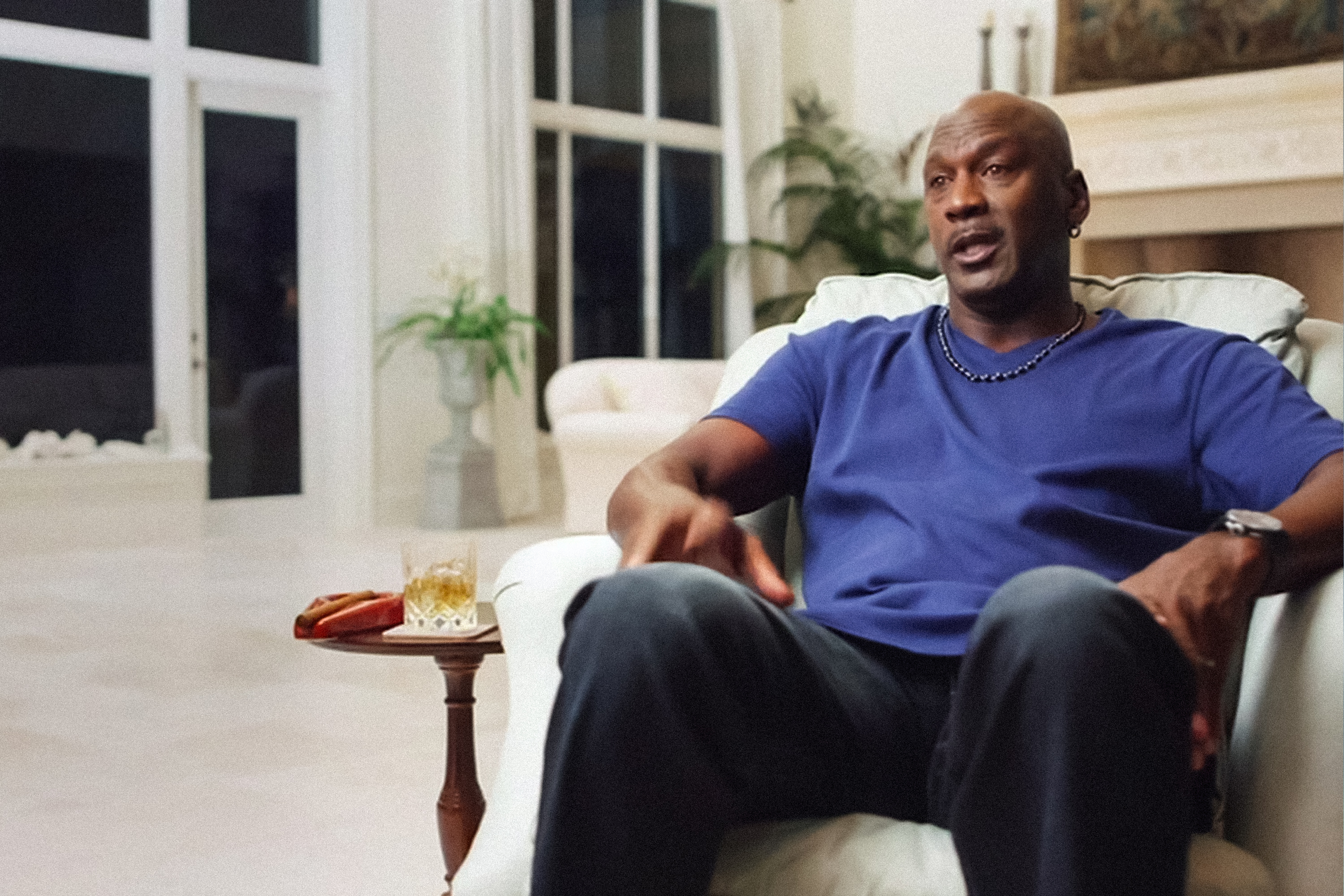
The Timberwolves Mess, Plus the Evolution of 21st Century Sports Docs With ‘The Last Dance’ Director Jason Hehir
Jason Hehir joins to discuss the medium of sports documentaries, as well as his films, like ‘The Fab Five,’ the lost Sacramento Kings documentary, ‘Down in the Valley,’ ‘Andre the Giant,’ and ‘The Last Dance’

‘Shogun’ Episode 6 and the British TV Landscape With Flo Lloyd-Hughes
Flo joins Chris and Andy to talk about British TV-watching habits, what American shows have crossed over to become popular in England this year, and more

Is the NCAA Still Effective at Developing Prospects? Plus, Sue Bird on the Rapid Ascent of Women’s Basketball.
And later, more on how the game is growing through player-led media platforms, what makes Sabrina Ionescu such a special star, and much more
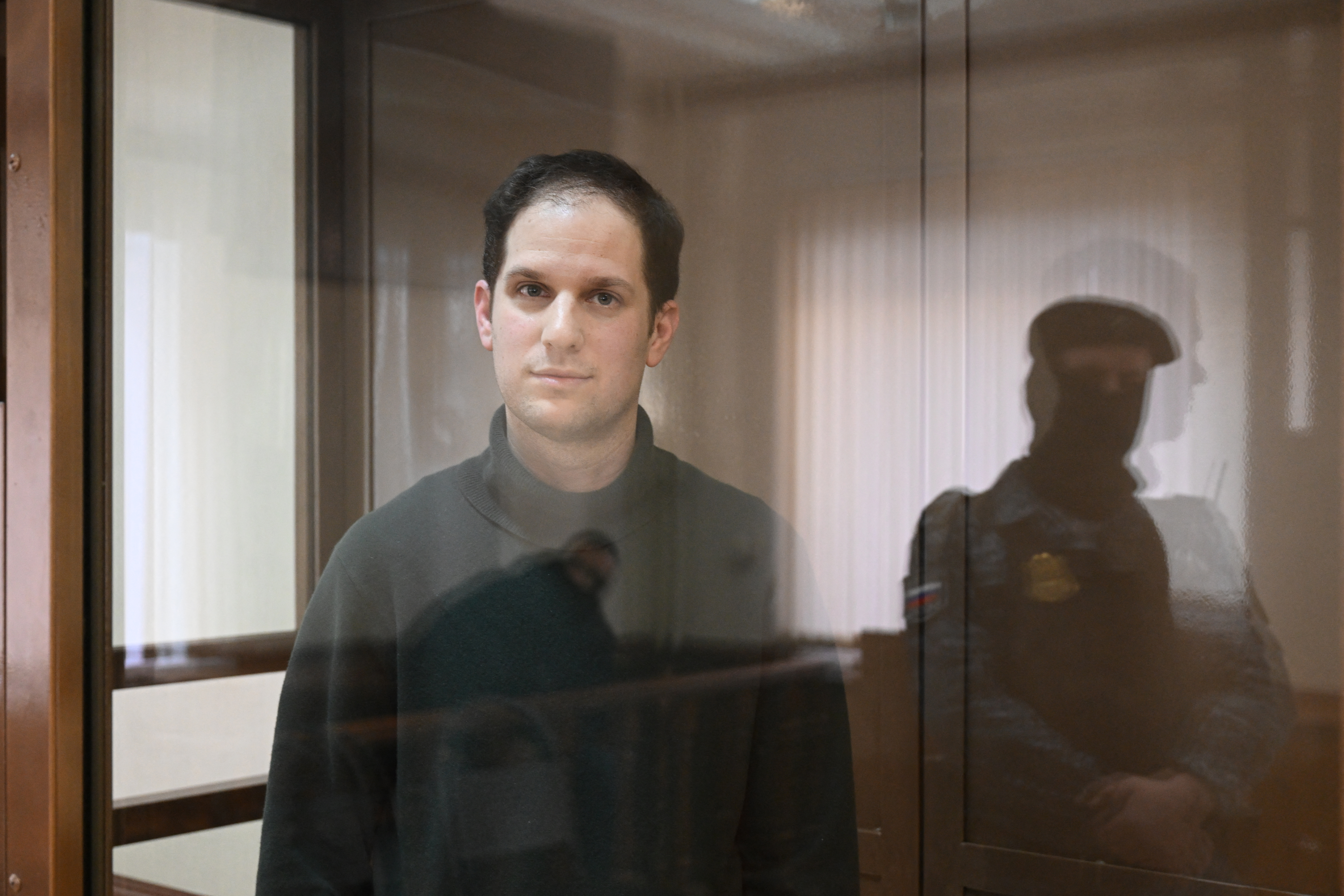
One Year Without Evan Gershkovich With Wall Street Journal Editor-in-Chief Emma Tucker
Plus, Bryan gives some brief thoughts on the Ronna McDaniel–NBC News affair
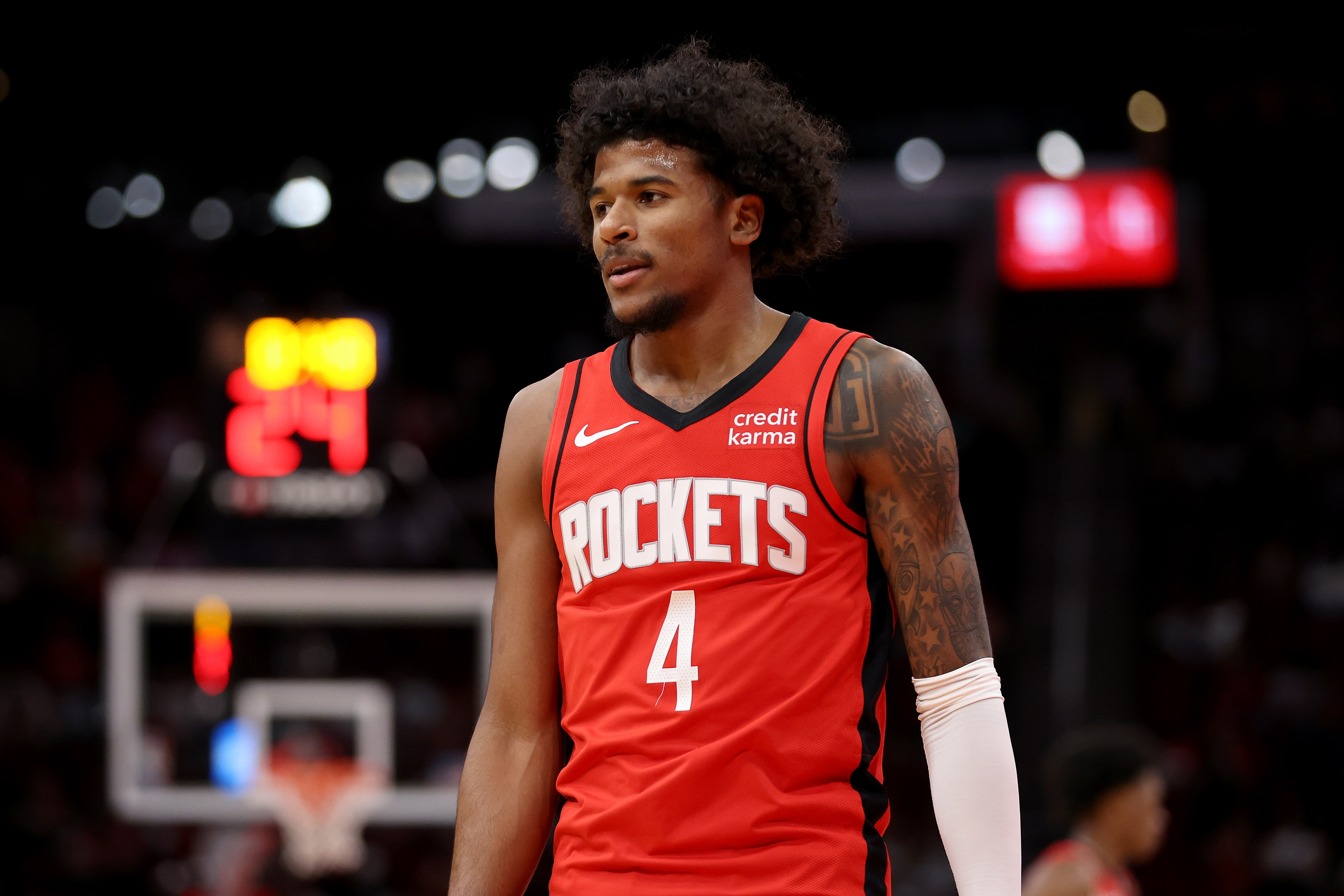
Jalen Green’s Rise, Ohtani, and World Series Picks With Jeff Passan. Plus, Doug McDermott Talks Wemby, Creighton, and More.
And later, more Life Advice with Ceruti and Kyle!

‘The Bachelor’ Aftermath Post-Finale Reactions With Mandy Foreman
Juliet returns for ‘Bachelor’ post-finale thoughts and reactions in the wake of Season 28 with colleague and friend Mandy Foreman.

Artists - A-H
- & Young
- .38 Special
- Aaron Lewis
- Aaron Neville
Artists - I-P
- Iron Butterfly
- Iron Maiden
- Izzy Stradlin
Artists - Q-Z
- Queens of the Stone Age
- Queensrÿche
- Classic Rock

- Keyboardist Jim Beard, Known for His...
- 12 Rock Legends Who Openly Dislike...
- 10 Rock Stars Who Can’t Stand...

- Legendary Motorhead Frontman, Lemmy, To Be...
- Happy 76th Birthday Tony Iommi: How...
- Metallica Secures Best Metal Performance at...

- Unveiling Stevie Ray Vaughan’s Top 10...
- Album Review: “Two Steps From The...
- The Facts In The Early Life...
Revisiting 10 Journey Songs From The ’70s
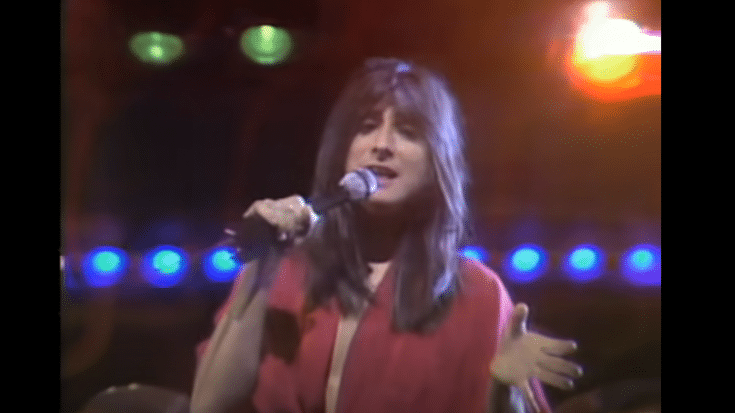
via journey/YouTube
Best Moments
Although some of their most enduring tracks were released in the early ’80s, Journey also had several classic hits from the ’70s. They formed in 1973 but it wasn’t until they got singer Steve Perry onboard when they finally achieved massive commercial success. He made his debut with them in 1977 and it was clear from the get-go that they were a match made in music heaven.
Let’s take a look at their unforgettable hits in the 1970s.
10. Do You Recall (1979)
Talk about pure power! Steve Perry’s vocals is fire.
9. Too Late (1979)
Perry wrote it about a friend who has become a drug addict. He said, “The drugs were setting up housekeeping.”
8. Daydream (1979)
It has that dreamy feel and while the musicianship is stellar, it’s Perry’s voice that steals the spotlight.
7. When You’re Alone (It Ain’t Easy)
Neal Schon lets loose with his brilliant guitarwork.
6. Lovin,’ Touchin,’ Squeezin’ (1979)
It’s the band’s first top 40 hit in the US. Written by Perry, it was inspired by an actual event – when he saw his girlfriend get out of a car and kiss the driver.
5. Just The Same Way (1979)
The layered harmony vocals is simply exquisite. It added more depth to the song.
4. Lights (1978)
The song is about San Francisco and it’s one of the first songs Perry sang for Journey. Perry explained, “I had the song written in Los Angeles almost completely except for the bridge and it was written about Los Angeles. It was ‘when the lights go down in the city and the sun shines on LA.’ I didn’t like the way it sounded at the time. And so I just had it sitting back in the corner. Then life changed my plans once again, and I was now facing joining Journey. I love San Francisco, the bay, and the whole thing. ‘The bay’ fit so nice, ‘When the lights go down in the city and the sun shines on the bay.’ It was one of those early-morning-going-across-the-bridge things, when the sun was coming up and the lights were going down. It was perfect.”
3. Anytime (1978)
Written before Perry joined Journey, Schon recalled: “Gregg Rolie was doing Bing Crosby – you know, ‘ooh, ooh.’ And I’d listened to lots of Beatles records when I was a kid, so I just went ‘Anytime that you want me.’ It came out real easy in rehearsal.”
2. Feeling That Way (1978)
This was initially an instrumental titled “Velvet Curtain” which they later abandoned. Eventually, Rolie got back to it and added words then renamed it to “Please Let Me Stay.” It was shelved at the last minute. After Perry joined, Rolie rewrote it again and shared the lead vocal duties with Perry.
1. Wheel in the Sky (1978)
One of their finest moments, it began as a poem titled “Wheels In My Mind”. It was their first single with Perry that eventually became a staple in their live repertoire.
Don’t Miss Out! Sign up for the Latest Updates
I love classic rock.
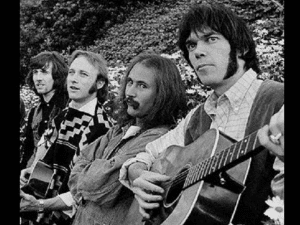
10 Rock & Roll Covers That Are Better Than the Original
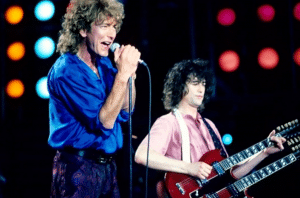
5 Worst Live Performances in Rock History
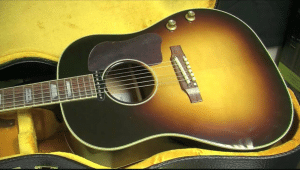
10 Guitars So Expensive They’ll Make You Faint (Sold…

Science Study Says That Bassists Are The Most Important…
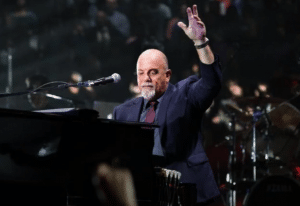
Rock Legends Who Went Bankrupt
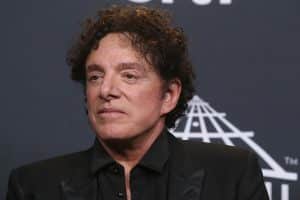
7 Classic Rock Legends Who Got Kicked Out Of Their Bands
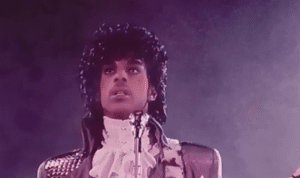
The Story Of How Prince Predicted His Death
Premium partners.

Interested in becoming a partner?
Contact us for more info.

© 2024 Society Of Rock
- Terms of Use
- Privacy Policy

This Journey classic was just named 'the biggest song of all time'
Journey ’s massive anthem "Don’t Stop Believin'” has officially gone 18x times platinum, and was named the top biggest song of all time.
Listen to Journey Radio and more on the free Audacy app
As of January 2024, the RIAA (Recording Industry Association of America) quietly certified Journey ’s 1981 single “Don’t Stop Believin’” as 18 times platinum . This means the song has sold a certified equivalent of 18 million units, via both physical copies and digital streaming, across its 42 year history. And, mind you, this is a United States ranking - meaning that the worldwide sales are even greater. Thus, Forbes Magazine has officially given "Don’t Stop Believin’” the title of the Biggest Song Of All Time.
This 18x platinum certification, which is now tied with Post Malone ’s “Sunflower,” was the first time the RIAA had promoted “Don’t Stop Believin’” since 2013. And the single wasn’t even Journey’s most popular song at the time of its release. Other hits like “Open Arms” and “Who’s Crying Now” outranked the song on Billboard charts . Regardless, “Don’t Stop Believin’” has become an anthem for both Journey and the entire world.
“We didn’t know it yet, but we had just written an anthem that would stand the test of time,” Journey's Jonathan Cain recalled in his autobiography , aptly named after the single. As a keyboard player and songwriter, Cain joined Journey in 1980 after his original group, The Babys , disbanded. He and singer Steve Perry were looking for inspiration, and turned to his old notebook. “On the last page of my notebook, I found three words scribbled: 'Don’t stop believin'" Cain wrote. “I knew Steve would like the title – the words my father had given me on a long-distance phone call one night.” Soon, the bandmates went from writing about two characters running away from home to writing about themselves, and how they were, “sacrificing it all to gamble on a dream.”
Lead singer and co-writer Perry recalls that songwriting session as a “rabid” attempt to give fans the rock-and-roll music they loved. But at the song’s National Recording Registry induction , even he couldn’t deny the anthem’s unrelenting power. “Every one of the songs that we ever recorded were treated like they were special,” he said in the interview. “But that song, over the years, has become something that has a life of its own. It’s about the people who’ve embraced it and found the lyrics to be something they can relate to and hold on to and sing.”
Congratulations to Journey! May your song play on, and on, and on, and on ….
To hear “Don’t Stop Believin’' and other hits from the band, check out Journey Radio anytime and anywhere on the free Audacy app.
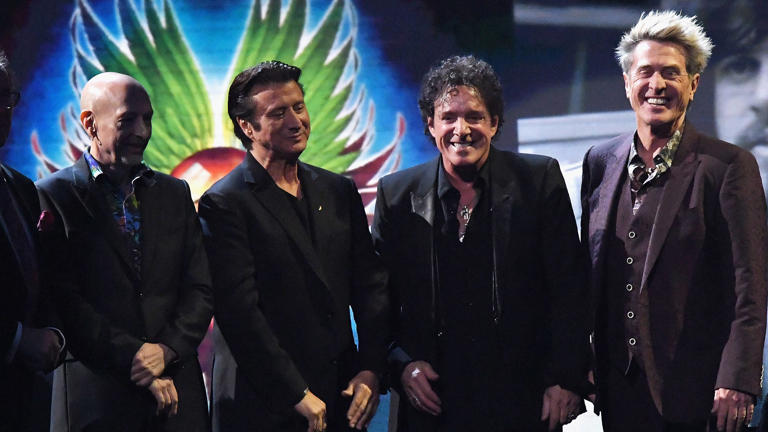
- solar eclipse
Tips to keep on your radar for April's total solar eclipse

MISSION, Kansas -- Stock up on groceries. Print off driving directions. And be very, very patient.
Small towns and rural enclaves along the path of April's total solar eclipse are steeling for huge crowds of sun chasers who plan to catch a glimpse of day turning into dusk in North America.
Tourism and community leaders in the path of totality from Texas to Maine have trucked in extra fuel and port-a-potties, and urged residents and visitors to be prepared. Some counties have issued disaster declarations to get extra help with policing and other aid, similar to the aftermath of severe storms. And in Oklahoma, the National Guard will help.
Because of expected heavy traffic and other disruptions, hundreds of schools are closing or switching to remote learning in states including Texas, Indiana, Ohio, New York, Pennsylvania, and Vermont.
WHY ALL THE WARNINGS?
Look no further back than the last U.S. total solar eclipse in 2017 to understand the concern, Tom Traub, who is part of NASA's eclipse ambassador program, said.
That year, he traveled to Beatrice, Nebraska, where the normal population of around 12,000 swelled to around 40,000 as eclipse watchers arrived.
"You had gas stations running out of gas," Traub, who also serves on the board that runs the Martz-Kohl Observatory near Frewsburg, New York, said. "You had restaurants running out of food. You had restrooms that were full and closed."
This time around, top viewing locations want to avoid a repeat.
"They are preparing for mostly a worst-case scenario," he said. "And hopefully that won't be the case."
CELLPHONES MIGHT NOT WORK
In central Texas, emergency officials in Hays County recommend a "solar eclipse survival bag" stocked with items including a mobile phone and charger.
The bag, the instructions advise, also should contain a hard copy of maps and a compass - "goin' old school!"
The reminder to bring a fully charged phone - but to expect possible jammed signals - is widespread in prime viewing spots. In 2017, drivers using their cellphones to share photos and navigate through traffic overwhelmed towers.
"Write down key phone numbers just in case," the Lyndon B. Johnson National Historical Park, about 50 miles east of Austin, advised.
STOCK UP ON FUEL AND FOOD
Don't wait until the last minute to buy groceries is common advice from several Texas counties that have issued disaster declarations so they can get get extra help with the crowds.
Among them is Kerr County, located about 65 miles northwest of San Antonio in the heart of the Texas Hill Country, where the normal population of 53,000 is expected to double or triple.
"Make sure your vehicles are tanked up, that you have sufficient grocery supplies, that your prescriptions are filled and that you are stocked up on provisions for any animals in your care," Rob Kelly, the county's top official who signed the disaster declaration, said in an online post.
In Ohio, where Gov. Mike DeWine signed an executive order this month to assure the state was well prepared, emergency management officials are urging residents to top off their gas tanks or fully charge their electric vehicles before heading out.
Traub suggests people treat the eclipse like a snowstorm: "Stock up, get ready, prepare to hunker down."
At Serafin's Food Market in Erie, Pennsylvania, owner Dan Serafin is ordering extra milk, eggs, water and batteries in preparation. "This is nuts," he said.
PREPARATIONS IN THE AIR AND AT SEA
Even smaller regional airports are getting ready. In Cape Girardeau, Missouri, extra fuel is being hauled in, airport manager Katrina Amos said.
The airport was caught off guard in 2017, when the city of around 40,000 along the Mississippi River also was in the path of totality.
Between 40 to 50 extra planes landed that day. 'We didn't expect this,'" Amos said.
This year, volunteers have signed up to help park all the extra planes that are expected. There also will be hamburgers and hot dogs, Amos said.
Offshore, the Coast Guard will have boats patrolling in Lake Erie; it's along the path and some boaters plan to watch from the water.
BRACE FOR TRAFFIC HASSLE
It will be all hands on deck at fire departments in the path of the eclipse, Dr. Brad Raetzke, an emergency room doctor in Columbus, Ohio, who also is a medical director for several fire departments in the area, said.
He's concerned about eye injuries if people stare at the sun without protective glasses. And with all the extra traffic, there also will likely be more crash injuries, Raetzke said.
In 2017, he went with his family to Nashville, Tennessee, to watch the eclipse. The return trip took 15 hours, instead of the typical six. "So I can understand the importance of planning," he said.
In Erie, where hotels are nearing capacity, residents are urged to leave the interstates to visitors, with signs posted more than 150 miles (241 kilometers) outside the city limits warning of delays.
Traffic will be "just almost nightmarish once totality ends," Chris Temple, the VisitErie spokesperson, who has been in meetings for more than a year planning for an onslaught of visitors that could double the size of the city of 94,000, said.
Despite the hassles, the city's tourism slogan to get eclipse-ready - SHINE - ends with a reminder.
"Enjoy the moment," Temple said.
Related Topics
- SOLAR ECLIPSE
Solar Eclipse

Mapping the 2024 total solar eclipse's journey across North America

Everything you need to enjoy the eclipse safely

Heading to TX to watch the solar eclipse? See these road trip songs

How visually impaired students can 'get a feel for' eclipses
Top stories.

Montgomery County couple charged in string of sex crimes
- 18 minutes ago

10-year-old boy critical after being shot during fight, sheriff says
- 2 hours ago

Mom accused of ditching baby in SE Houston has criminal history: Docs

Job seekers' showcase sparks along with resume during hands-on fair
- 6 minutes ago

Sunshine returns for Astros season opener, clouds are back for Easter
Opening Day isn't the only show Thursday. Beware of downtown traffic.
Woman killed, 2 hurt after fight between families ends in gunfire: HPD
Over 100 gallons of diesel spill on US-90 after crash with 18-wheeler

IMAGES
VIDEO
COMMENTS
Keep scrolling as we count them all down on the following list of All 173 Journey Songs Ranked Worst to Best. No. 173. "Back Talk" from 'Frontiers' (1983) This song almost single-handedly kept ...
Lovin', Touchin', Squeezin' (Official HD Video - 1979) Journey. 3:59. Don't Stop Believin' (Escape Tour 1981: Live in Japan) Journey. 4:21. New recommendations. Greatest journey hits are curated in this music video playlist. Enjoy the greatest hits of journey in this playlist.
Journey Song list. After All These Years (2008) Any Way You Want It (1980) Anytime (1978) Be Good To Yourself (1986) City of Hope (2011) Dixie Highway (1981) Don't Stop Believin' (1981) Faithfully (1983)
The title track from Journey's Billboard 200-topping studio album straddled the hard rock/pomp attack of the group's mid-'70s output with the melodic sensibility of the Perry-Cain axis.
2. Singles. 52. Soundtrack albums. 1. American rock band Journey has released 15 studio albums, five live albums, 11 compilation albums, and 52 singles since 1975.
A power ballad in the best Journey tradition. 8. Lovin, Touchin', Squeezin' (1979) Anyone who thinks that Journey aren't capable of anything other than slushy ballads really should check out Lovin, Touchin', Squeezin' from 1979's Evolution album. It has a funk groove, and while the tempo is very much of the balladic kind, Neal Schon ...
Enjoy the greatest hits of Journey in this playlist. Check out other playlists for audio videos, live performances, interviews and more... More. Shuffle. Save to library. Faithfully (Official HD Video - 1983) Journey. 4:28. Don't Stop Believin' (Live 1981: Escape Tour - 2022 HD Remaster)
Journey's Greatest Hits. Album • 1988. 15 songs • 1 hour, 1 minute. Greatest Hits is a compilation album by the American rock band Journey, originally released in 1988 by Columbia Records. It is the band's best-selling career disc, spending 796 weeks on the Billboard 200 albums chart. Additionally, as of March 2024, it has logged 1,432 ...
Official Audio for "Don't Stop Believin'" by JourneyListen to Journey: https://Journey.lnk.to/listenYDWatch more Journey videos: https://Journey.lnk.to/liste...
Journey - Top 10 SongsThe best and greatest hits by the wonderful rock band JourneyIf You Like The Video Please Subscribe For More Top 10 Videos.No. 10 - Whe...
"City Of The Angels' by JourneyListen to Journey: https://journey.lnk.to/listenYDWatch more Journey videos: https://Journey.lnk.to/listenYD/youtubeSubscribe ...
10. "Lovin', Touchin', Squeezin'" (1979) While Journey wrote most of their hits in the 80s, "Lovin', Touchin', Squeezin'" was one of their top songs in the 70s, having been released in 1979. This song managed to make it to 16 th on the top charts and remained on them for 20 weeks. 9.
No. 27. "Little Girl". From: B-side of "Open Arms" (1981) "Little Girl" was the the only proper song from 1980's Dream, After Dream, a soundtrack that's not part of the band's main catalog since ...
Related: 10 Best Queen Love Songs of All Time, Ranked. 3. Separate Ways (Worlds Apart) With one of the most adrenaline-fueled melodies on this list, Journey does an excellent job of telling a cinematic story through energetic production and signature vocals. "Separate Ways" has a rocking dynamic, yet the lyrical content is a bit touching.
History 1973-1977: Formation, Journey, Look into the Future and Next Neal Schon, the remaining original member of Journey in 2008. The original members of Journey came together in San Francisco in 1973 under the auspices of former Santana manager Herbie Herbert.Originally called the Golden Gate Rhythm Section and intended to serve as a backup group for established Bay Area artists, the band ...
Journey had their biggest commercial success between 1978 and 1987, when Steve Perry was lead vocalist; they released a series of hit songs, including "Don't Stop Believin'" (1981), which in 2009 became the top-selling track in iTunes history among songs not released in the 21st century. Reúne los más grandes éxitos de la banda.
Here are the 60 most iconic tracks from this time. 1. Smells Like Teen Spirit - Nirvana. In the early 90s, Nirvana shattered the music scene with 'Smells Like Teen Spirit.'. The title was inspired by a deodorant brand, Teen Spirit, which Kurt Cobain's friend jokingly wrote on his wall, saying Kurt smelled like it. 2.
Ross Valory, the bassist for Journey from their inception until 2020, talks band history and new solo album 'All of the Above.' Journey's 'Don't Stop Believin'': What It Was Like to Play in the Band
From the grunge revolution to the rise of pop sensations and the flourishing hip-hop culture, the '90s left an indelible mark on the world of music. Let's take a nostalgic journey down memory lane with a playlist of 20 iconic songs that defined this remarkable era. Nirvana - "Smells Like Teen Spirit"
Take a look back at a decade where grunge,alternative,rock,pop,rap and dance music escalates into what it is today.
Journey had their biggest commercial success between 1978 and 1987, when Steve Perry was lead vocalist; they released a series of hit songs, including "Don't Stop Believin'", which in 2009 became the top-selling track in iTunes history among songs not released in the 21st century.
Follow and listen for free on Spotify. In Episode 78 of 60 Songs That Explain the '90s— yep, you read that right—we're exploring "It Was a Good Day," with a guest spot from Van Lathan ...
5. Just The Same Way (1979) The layered harmony vocals is simply exquisite. It added more depth to the song. 4. Lights (1978) The song is about San Francisco and it's one of the first songs Perry sang for Journey. Perry explained, "I had the song written in Los Angeles almost completely except for the bridge and it was written about Los ...
Journey's massive anthem "Don't Stop Believin'" has officially gone 18x times platinum, and was named the top biggest song of all time.. Listen to Journey Radio and more on the free Audacy ...
Journey Greatest Hits ~ Best Songs Of 80s Old Music Hits Collection[00:00:00] - 01. S̲e̲̲pa̲̲ra̲̲te̲̲ W̲a̲̲ys[00:04:24] - 02. W̲he̲̲n Y̲o̲̲u̲̲ L̲o̲̲ve̲̲ A̲̲̲...
Mapping the 2024 total solar eclipse's journey across North America ... See these road trip songs. How visually impaired students can 'get a feel for' eclipses ... sheriff says. 41 minutes ago ...